The five worst trades in Knicks history

Your teams. Your favorite writers. Wherever you want them. Personalize SI with our new App. Install on iOS (iOS or Android)
On Wednesday, Phil Jackson made the biggest trade during his two-plus years as president of the Knicks, acquiring point guard Derrick Rose from the Bulls, along with Justin Holiday and a future second-rounder, in exchange for center Robin Lopez, and guards Jose Calderon and Jerian Grant. It may also be the biggest risk he’s taken during his tenure next to drafting Kristaps Porzingis.
Rose, 27, has missed half of the Bulls’ regular season games over the past four years and will be a free agent after next season. Lopez and Grant, on the other hand, were signed through at least the 2018–19 season on affordable deals, and Calderon’s deal, while unsightly, was due to expire next summer.
The deal could work out in the Knicks’ favor, but chances of that happening aren’t grand considering Rose’s long history of injuries.
• Knicks make desperate play to get Rose | SI Vault: Rose’s rise to MVP
With that, we decided to examine the five worst trades in Knicks history. The franchise has taken a multitude of big risks by mortgaging its future and hasn’t had a high success rate doing so.
5. Antonio McDyess, 2002
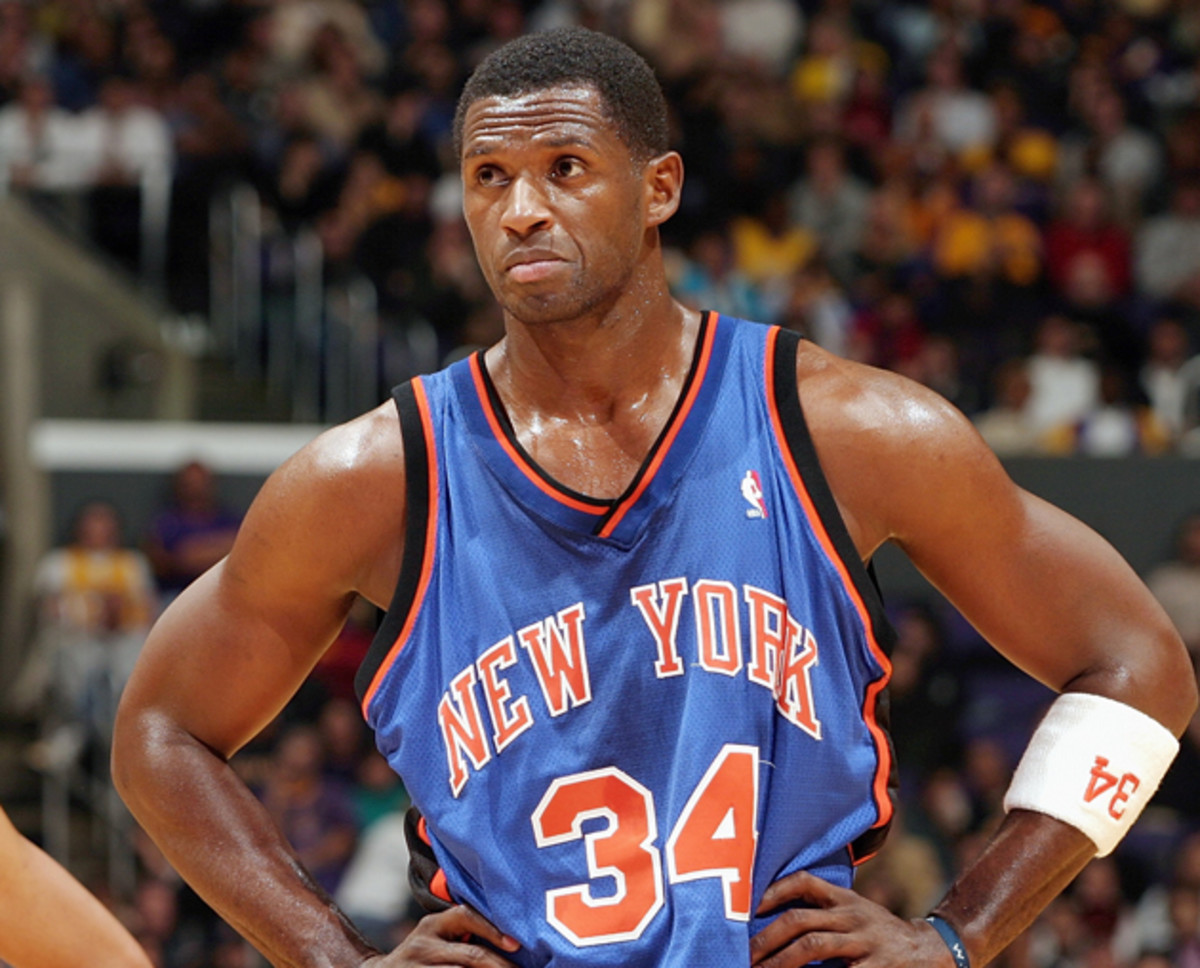
Knicks give:
McDyess missed the entire 2002–03 season due to a Patellar tendon injury, and played in just 18 games the following year before he was traded away to the Suns for Stephon Marbury. He went on to become a valuable role player off the bench, and Nené has put together 15 solid seasons, averaging around 15 points and eight rebounds per game at his peak. Losing Camby and Jackson wouldn’t have been the biggest deal if McDyess was anything close to the player he was before his knee injury.
4. Steve Francis, 2006
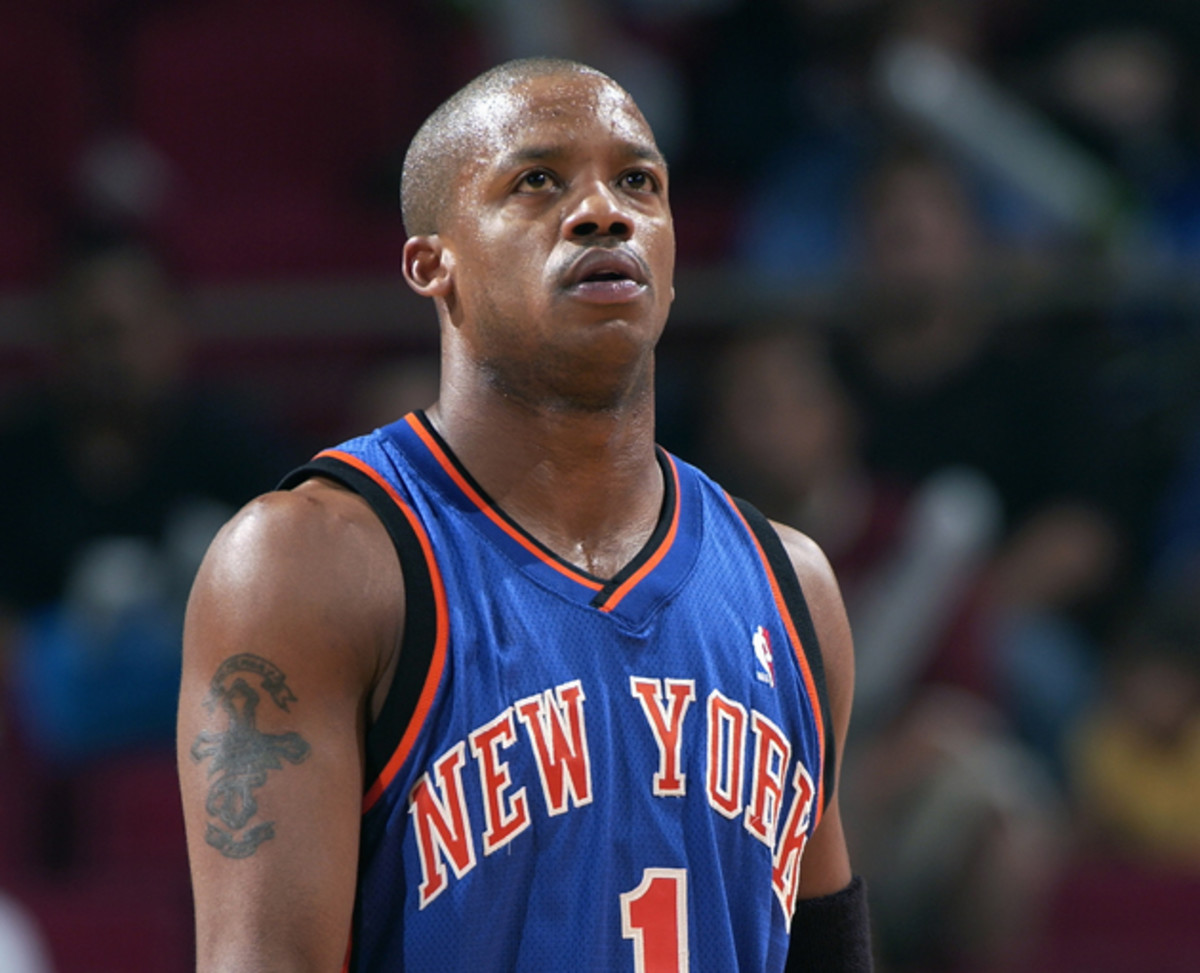
Knicks give:
The Knicks had a vision of pairing Francis and Stephon Marbury in a killer backcourt, but wound up with a once-great player on his last legs. Francis averaged 21.3 points, 7 assists and 5.8 rebounds for Orlando in 2004–05, dropped off a bit in his first 46 games in ’05–06 and then absolutely tanked once he arrived in New York.
Trevor Ariza has given several teams great minutes off the bench with his athleticism. He was a solid second-round find for the Knicks, but they were never able to reap the rewards.
3. Patrick Ewing, 2000
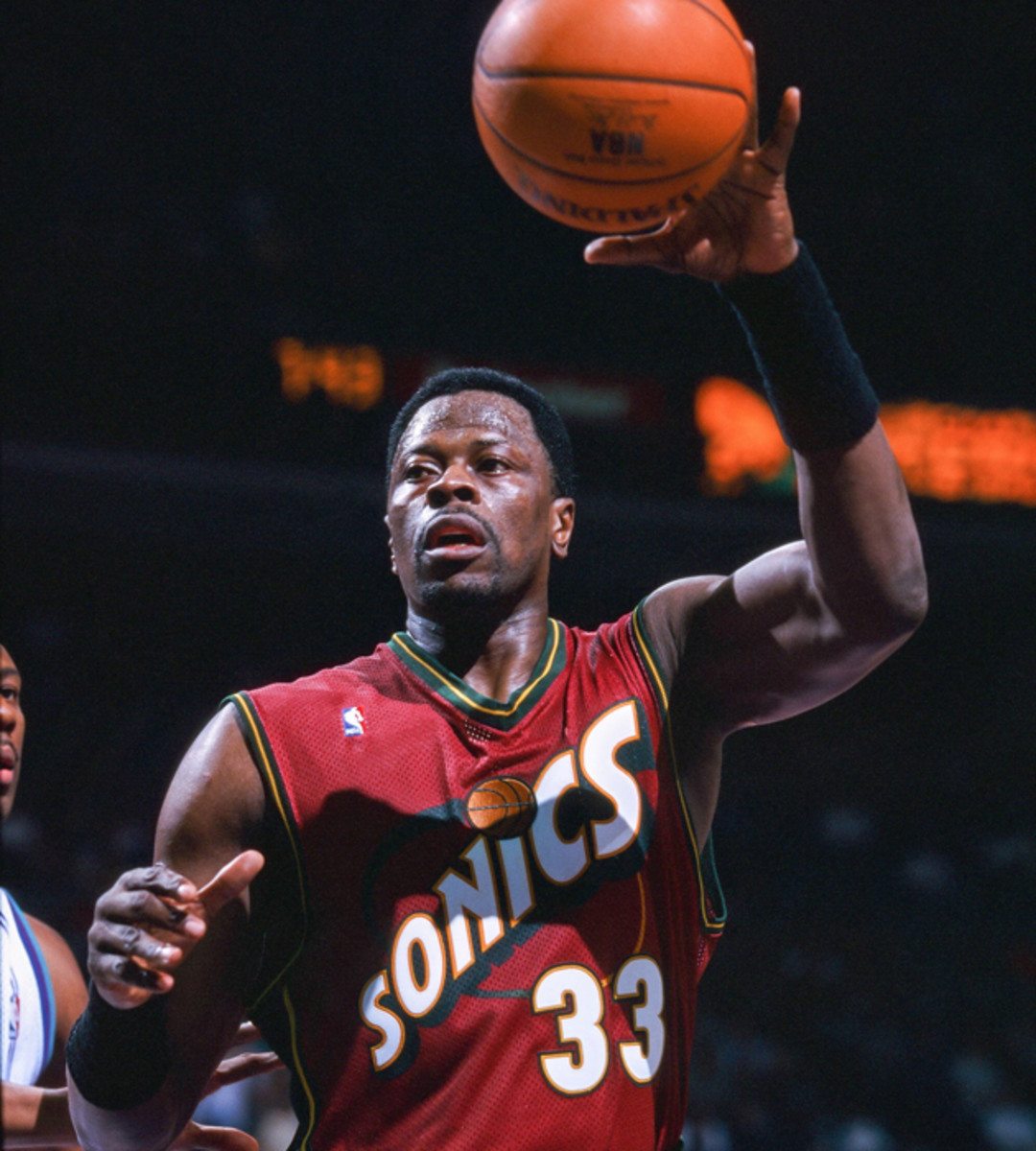
Knicks give:
This is a move that really upset the Knicks’ fan base, and sort of disrespected Ewing, though it wasn’t incredibly catastrophic by Knicks standards.
In this four-team trade (the pieces exchanged between non-Knicks parties have been excluded) New York added almost $90 million of salary through 2004, and sent away a franchise legend before he could retire with the team. In the grand scheme of things, the Knicks really got nothing in return for Ewing; Longley played in 25 games before retiring, Rice hit some threes in his lone season, and if you’re under the age of 25, you’ve likely never heard of the remaining players in the package the Knicks received.
• From SI Longform: Knicks get lucky with Patrick Ewing draft lottery
2. Eddy Curry, 2005
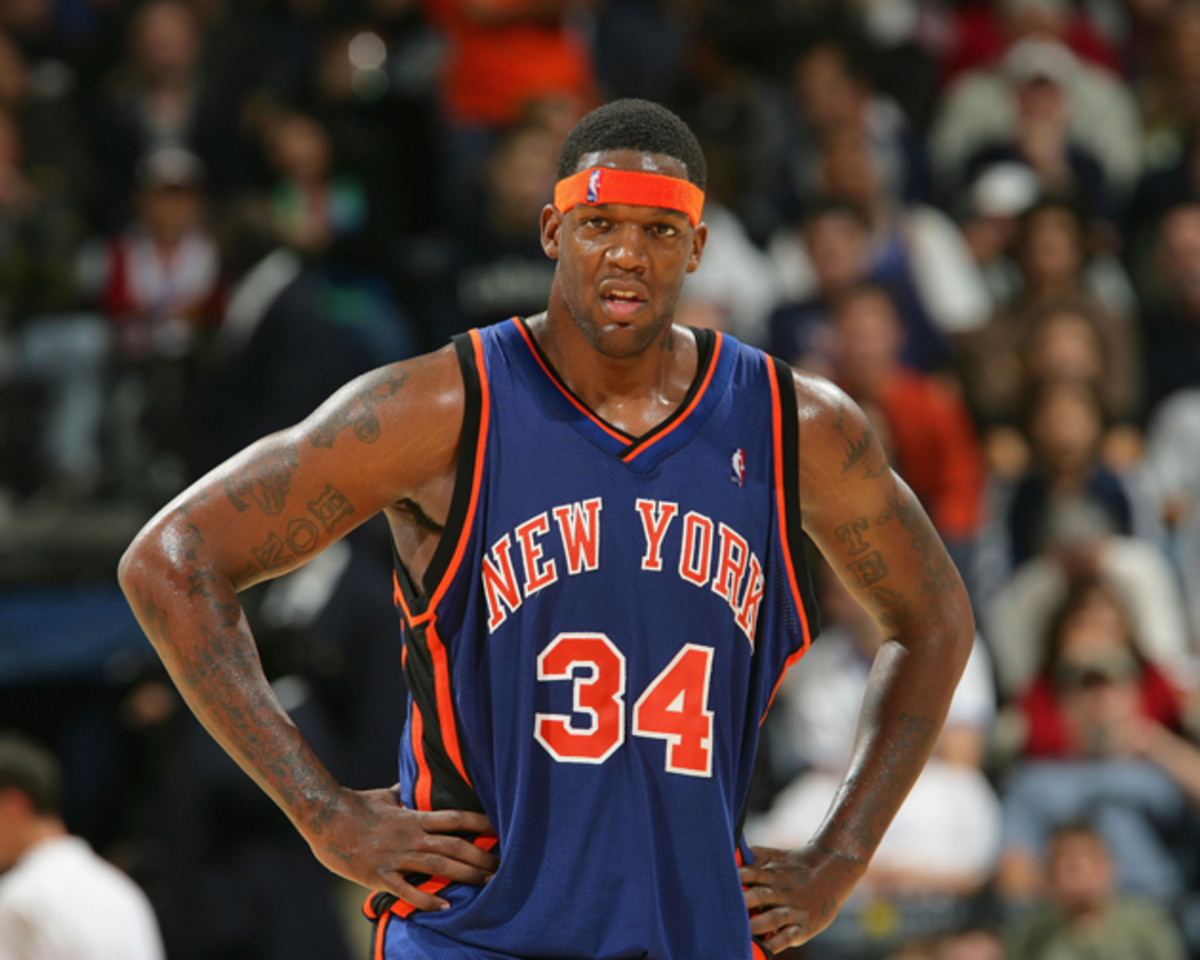
Knicks give:
Before the Bargnani trade, this was far and away the worst trade in team history. The Knicks were forced to select Renaldo Balkman, a head-scratcher, instead of Aldridge at No. 2 in 2006, and then Chandler at No. 23 the following year instead of Noah, Spencer Hawes or Thad Young at No. 7.
And, it was all for nothing. Curry had one good season for the Knicks, signing a long-term deal, and then missing a considerable amount of time due to weight issues and legal troubles.
Photos of the biggest NBA draft busts of alltime
Biggest NBA Draft Busts Of All Time
Anthony Bennett, Cavaliers | No. 1 pick, 2013
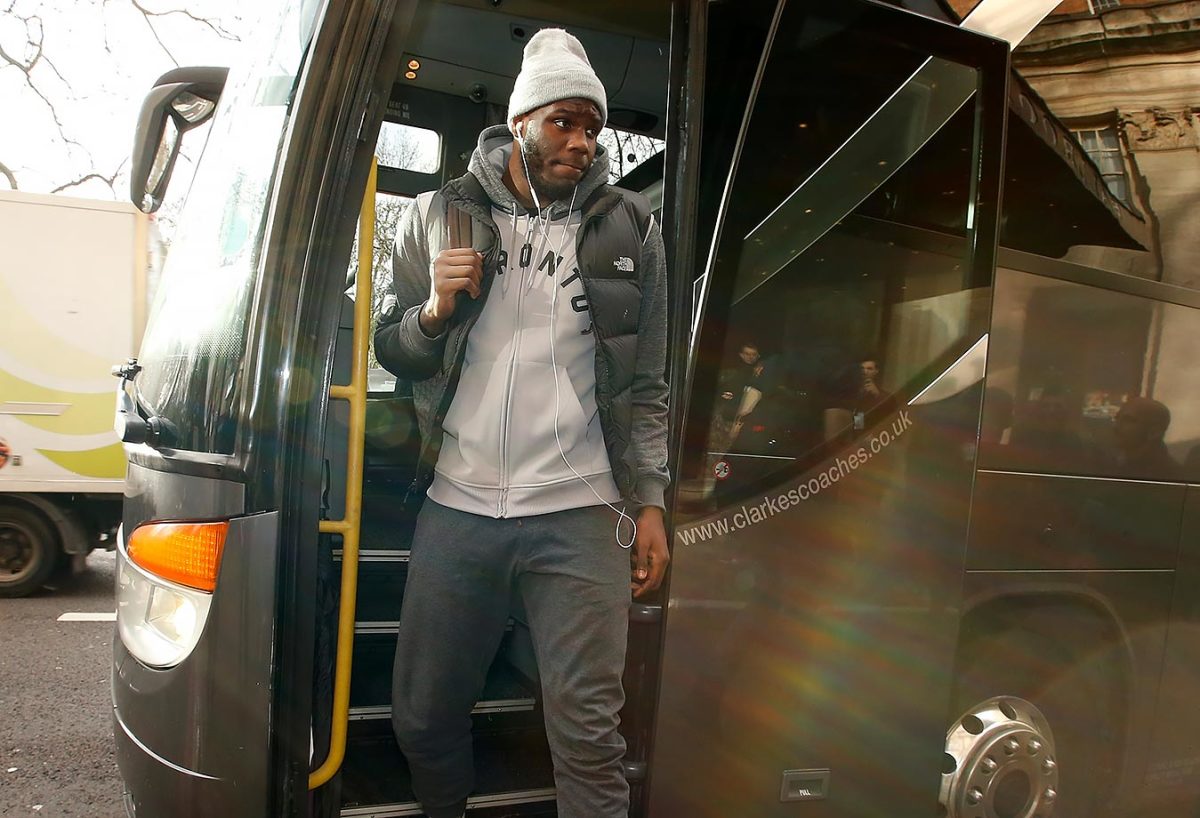
After burning out in both Cleveland and Minnesota in just two years, Bennett hardly logged any minutes in Toronto when the Raptors waived him on Feb. 29, 2016. The No. 1 overall pick, who was recently dropped by the Nets, owns averages of 4.4 points and 3.1 rebounds in just 12.6 minutes per game.
Hasheem Thabeet, Grizzlies | No. 2 pick, 2009
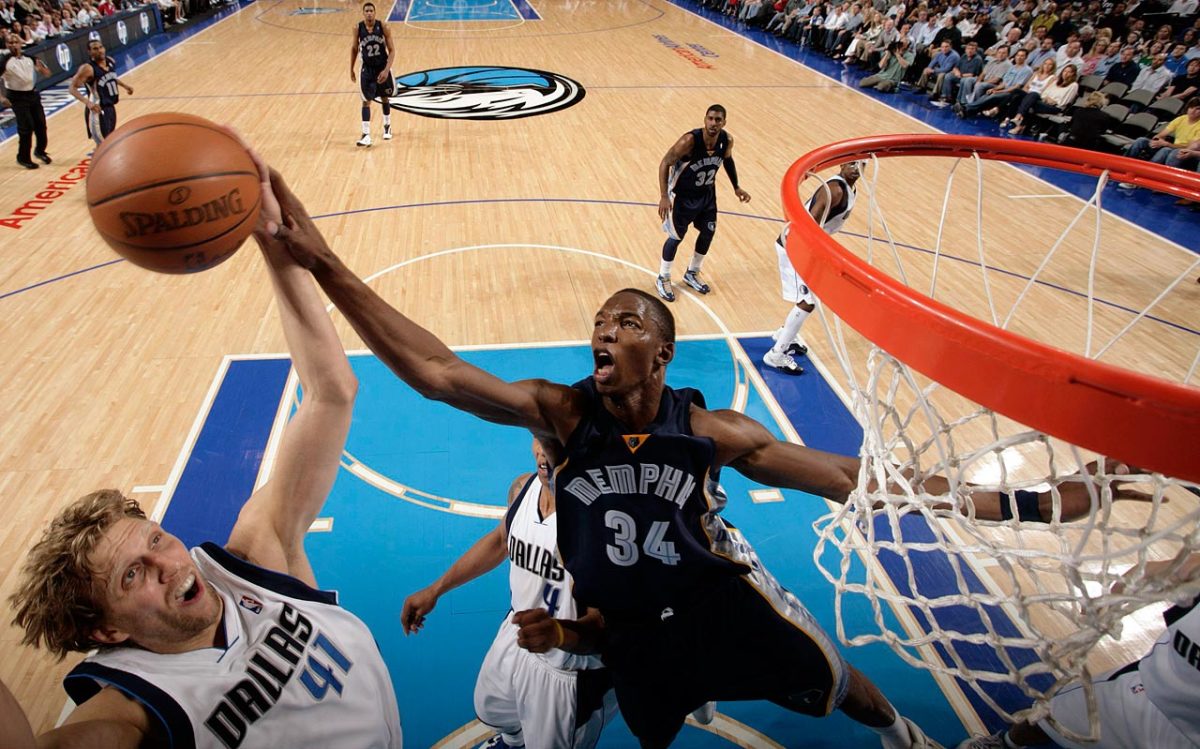
Thabeet has already been passed from Memphis to Houston to Portland to Oklahoma City. The former UConn center was always thought to be a long-term project, but he's yet to develop into a solid NBA center. He has career averages of 2.2 points and 2.7 rebounds in 10.5 minutes.
Joe Alexander, Bucks | No. 8 pick, 2008
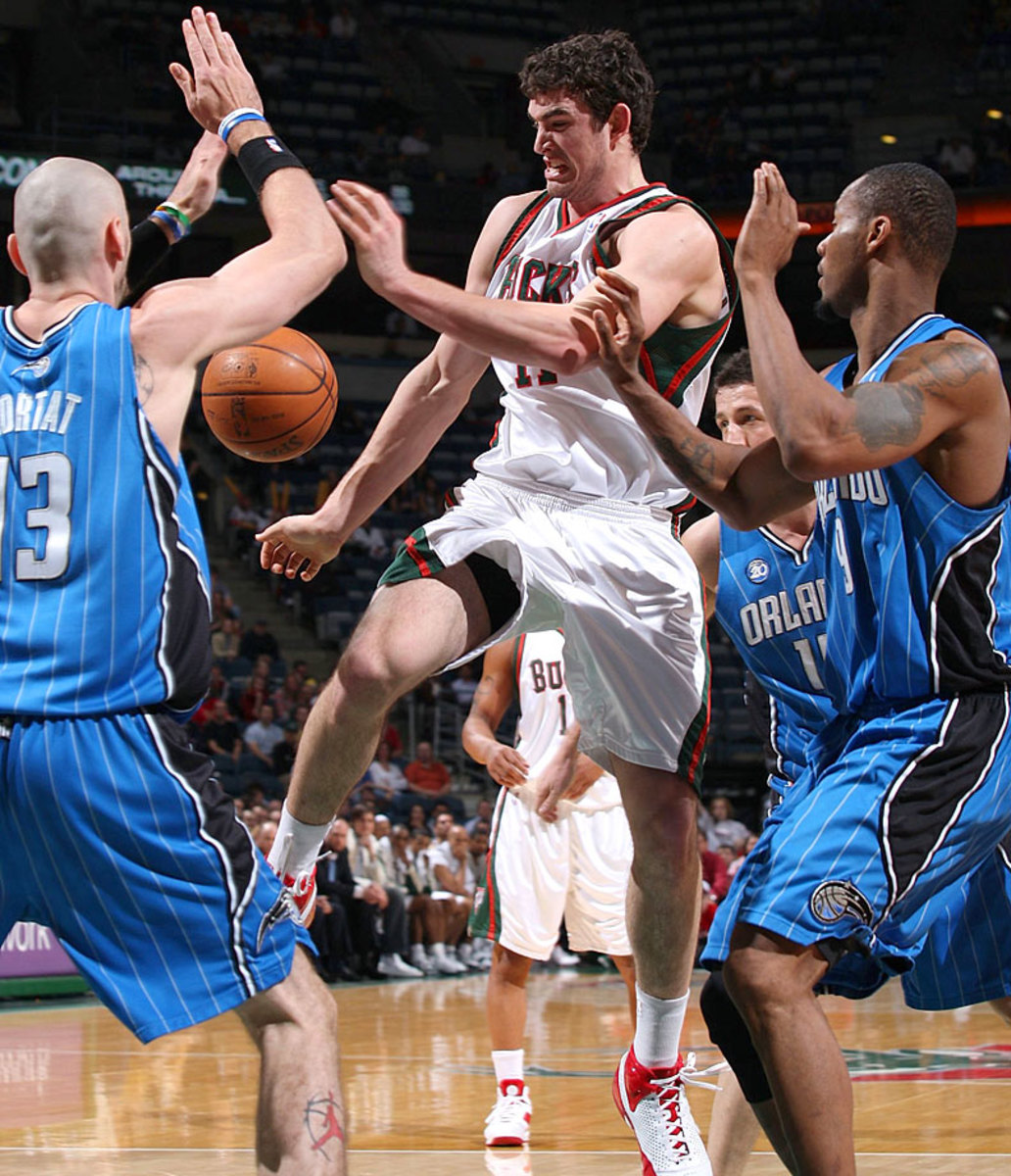
Alexander hasn't played in the NBA since 2010 (he was in Warriors camp in 2013) after averaging 4.2 points in 67 games. Ryan Anderson, Serge Ibaka and Nicolas Batum were among the fellow forwards who were taken after Alexander in the first round.
Greg Oden, Trail Blazers | No. 1 pick, 2007
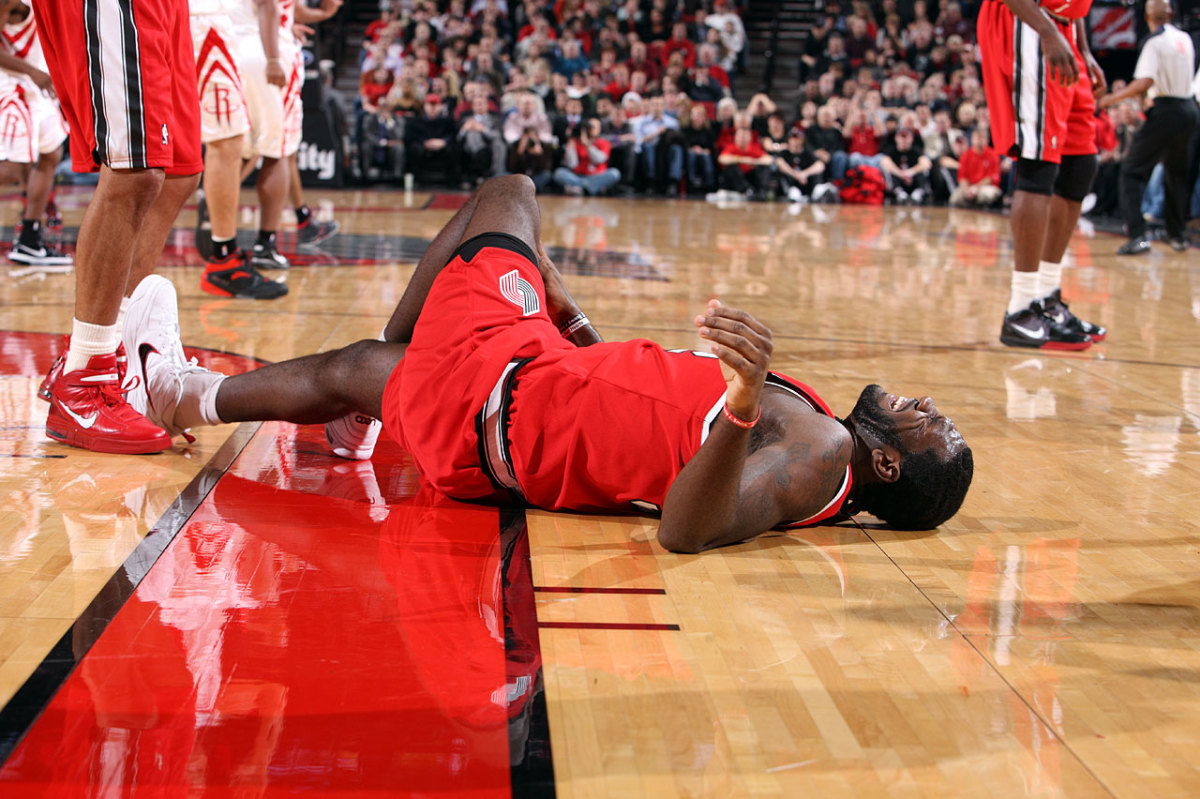
"I know I'm one of the biggest busts in NBA history and I know that it'll only get worse as Kevin Durant continues doing big things ... It's frustrating that my body can't do what my mind wants it to do sometimes. But worrying or complaining about it isn't going to fix anything," said Oden. After being released by the Blazers in March 2012, Oden spent the entire 2012-13 season rehabilitating from multiple knee surgeries. He last played, sparingly, with the Heat in 2014.
Adam Morrison, Bobcats | No. 3 pick, 2006
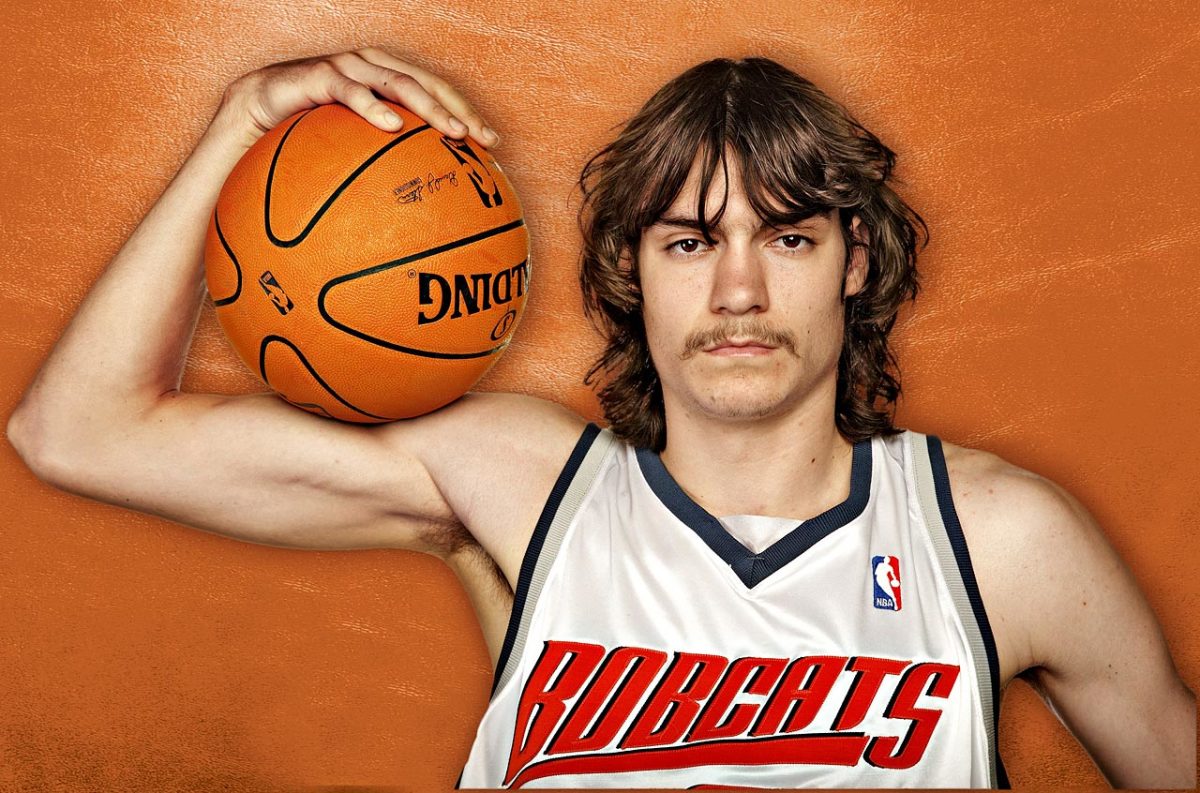
Five years after missing on Kwame Brown, Michael Jordan fared no better with Morrison. The former Gonzaga star averaged 11.8 points as a rookie but shot only 37.6 percent. He missed the next season with a knee injury, was traded to the Lakers in 2009 and quietly fell out of the league in 2010.
Fran Vazquez, Magic | No. 11 pick, 2005
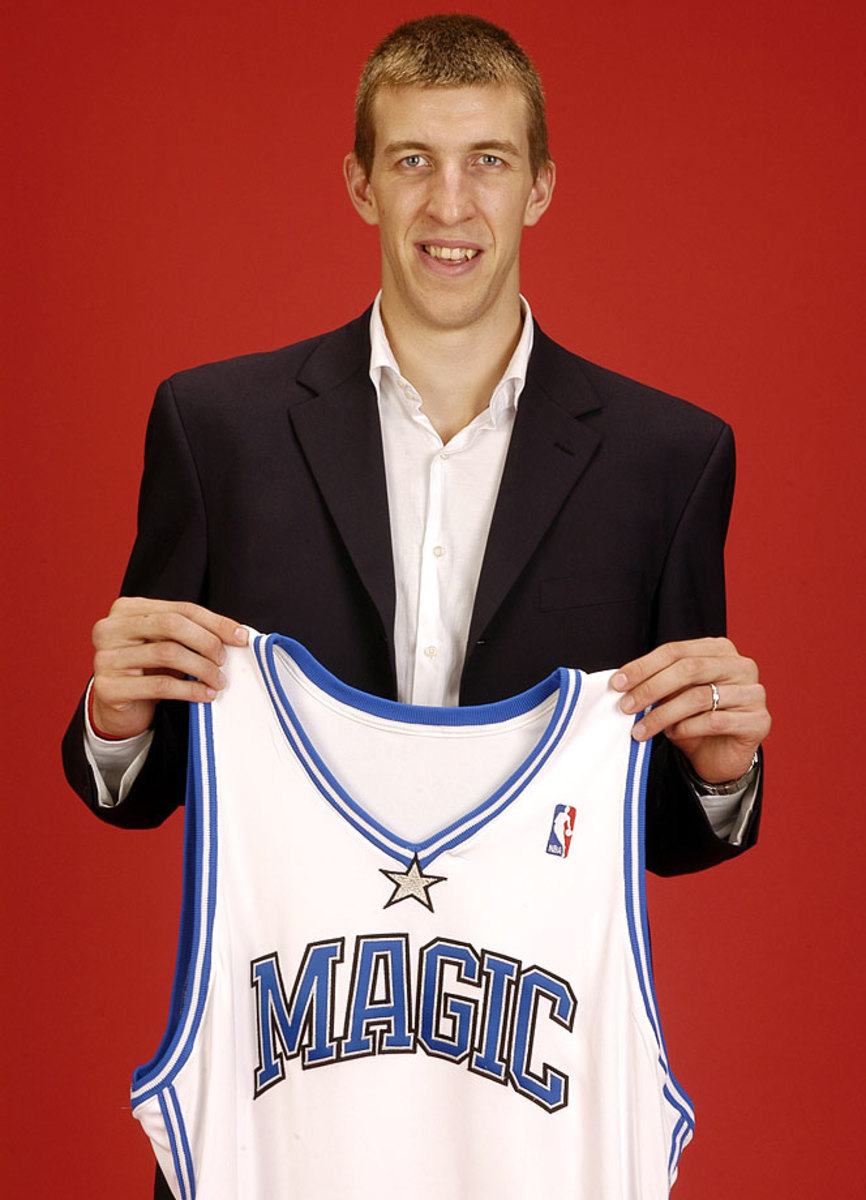
This isn't about the Spanish big man's NBA body of work — after all, there is none. It's about the fact that Orlando used a valuable lottery pick on a player who hasn't even suited up for them. Vazquez is now 31 with over a decade under his belt in the Spanish league.
Rafael Araujo, Raptors | No. 8 pick, 2004
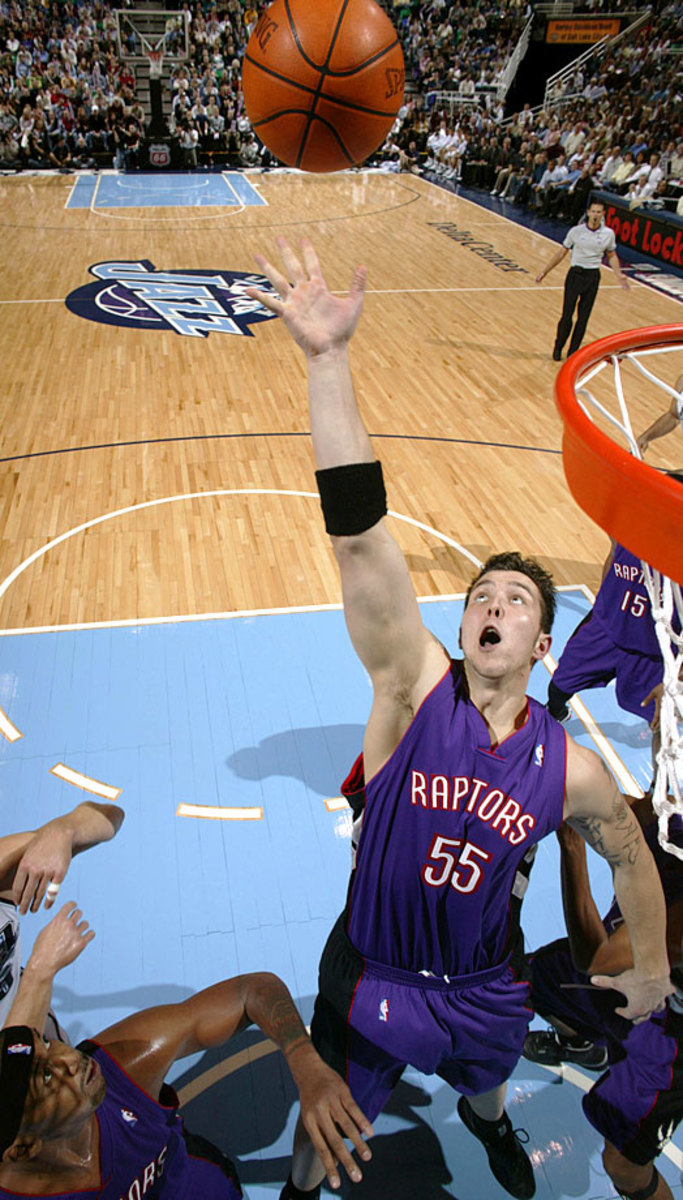
He went about 10 spots higher than was expected, and about 25 spots higher than was deserved. The 6-11 center from BYU was a three-year washout in the NBA.
Darko Milicic, Pistons | No. 2 pick, 2003
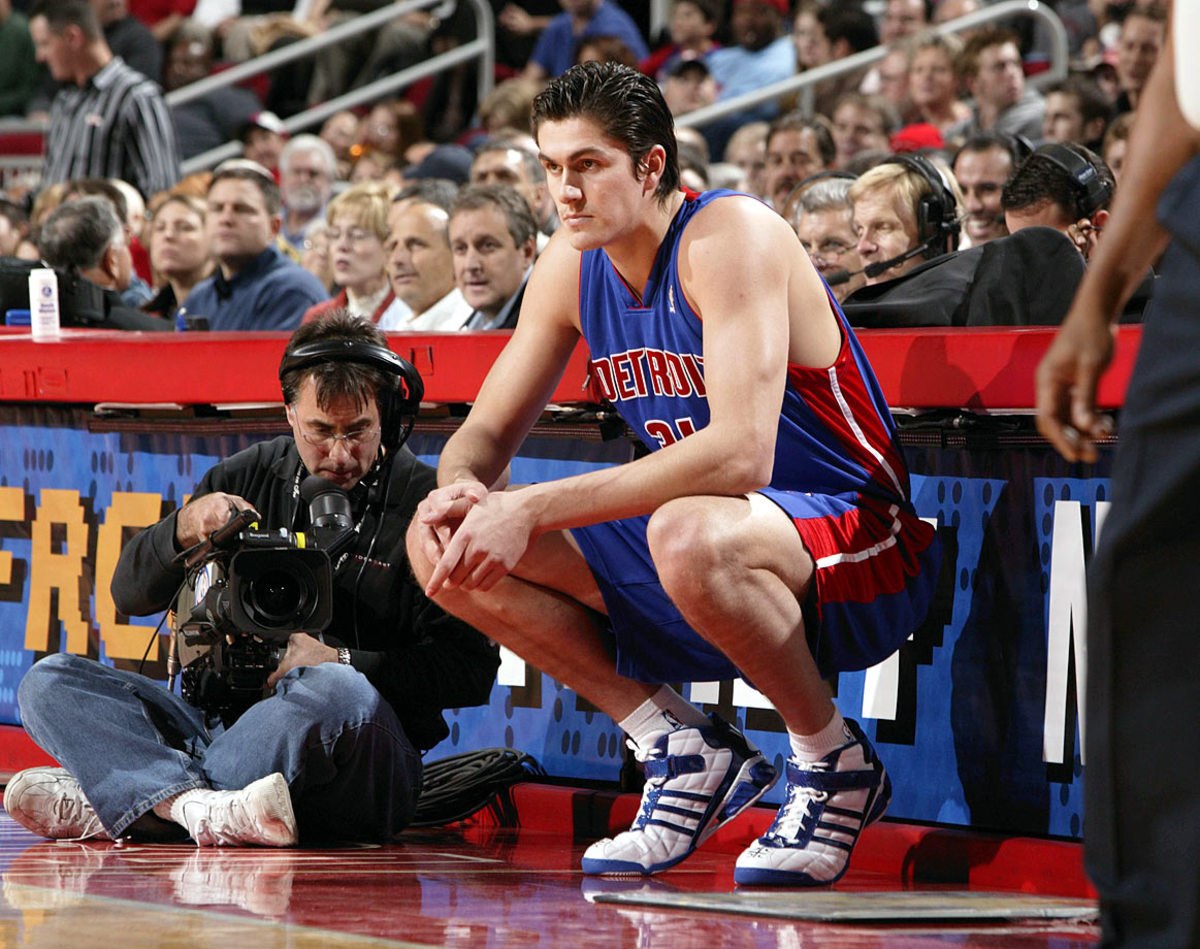
LeBron James, Milicic, Carmelo Anthony, Chris Bosh and Dwyane Wade — which top five pick from 2003 doesn't belong? In fairness, the 28-year-old Milicic showed flashes of strong play. But overall, in 10 seasons Milicic averaged 6.0 points and 4.2 rebounds while playing for six teams; he did not play in the NBA in 2013-14. Joe Dumars and the Pistons whiffed on this one.
Nikoloz Tskitishvili, Nuggets | No. 5 pick, 2002
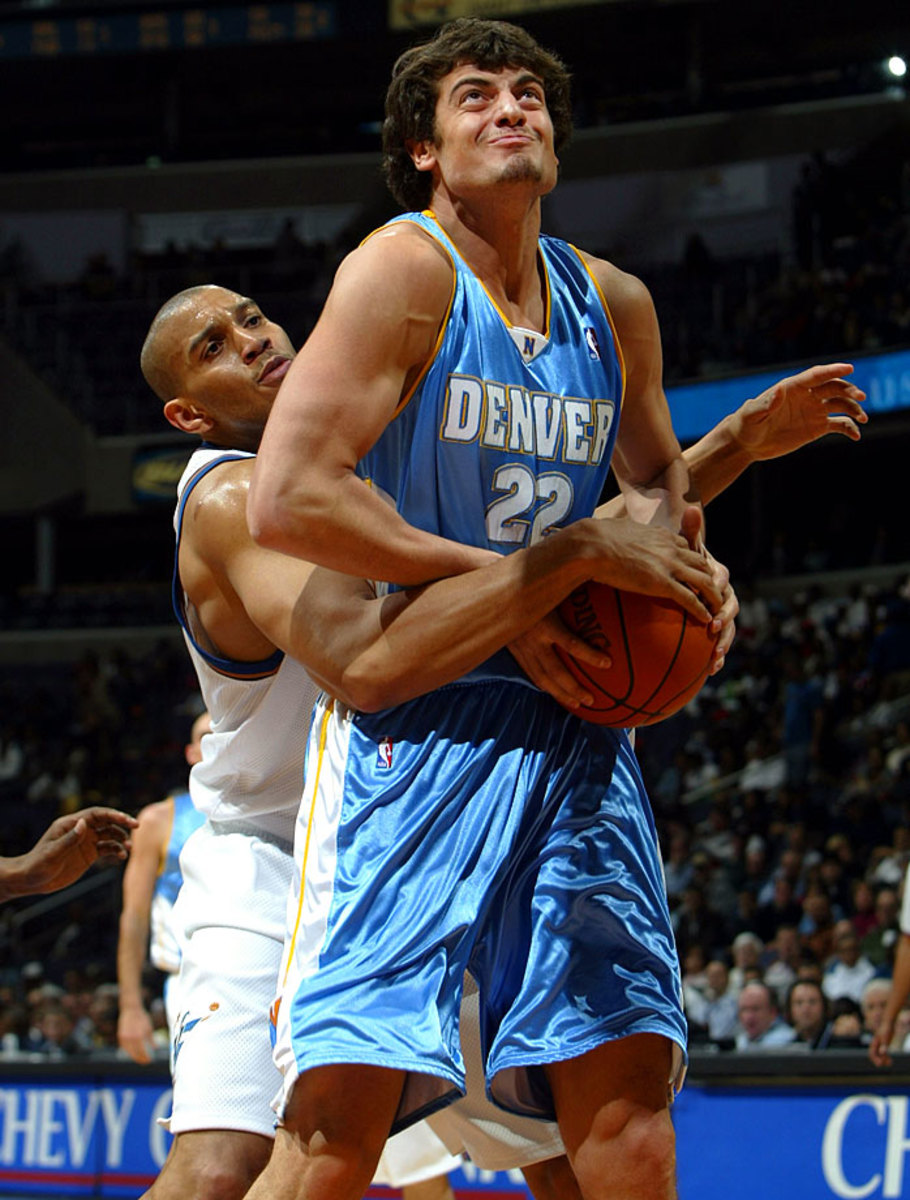
Skita created a buzz with his predraft workouts, and that was that. Four teams discarded him in four seasons. Then-GM Kiki Vandeweghe and the Nuggets did better with the other 19-year-old they acquired two picks later: Nene.
Kwame Brown, Wizards | No. 1 pick, 2001
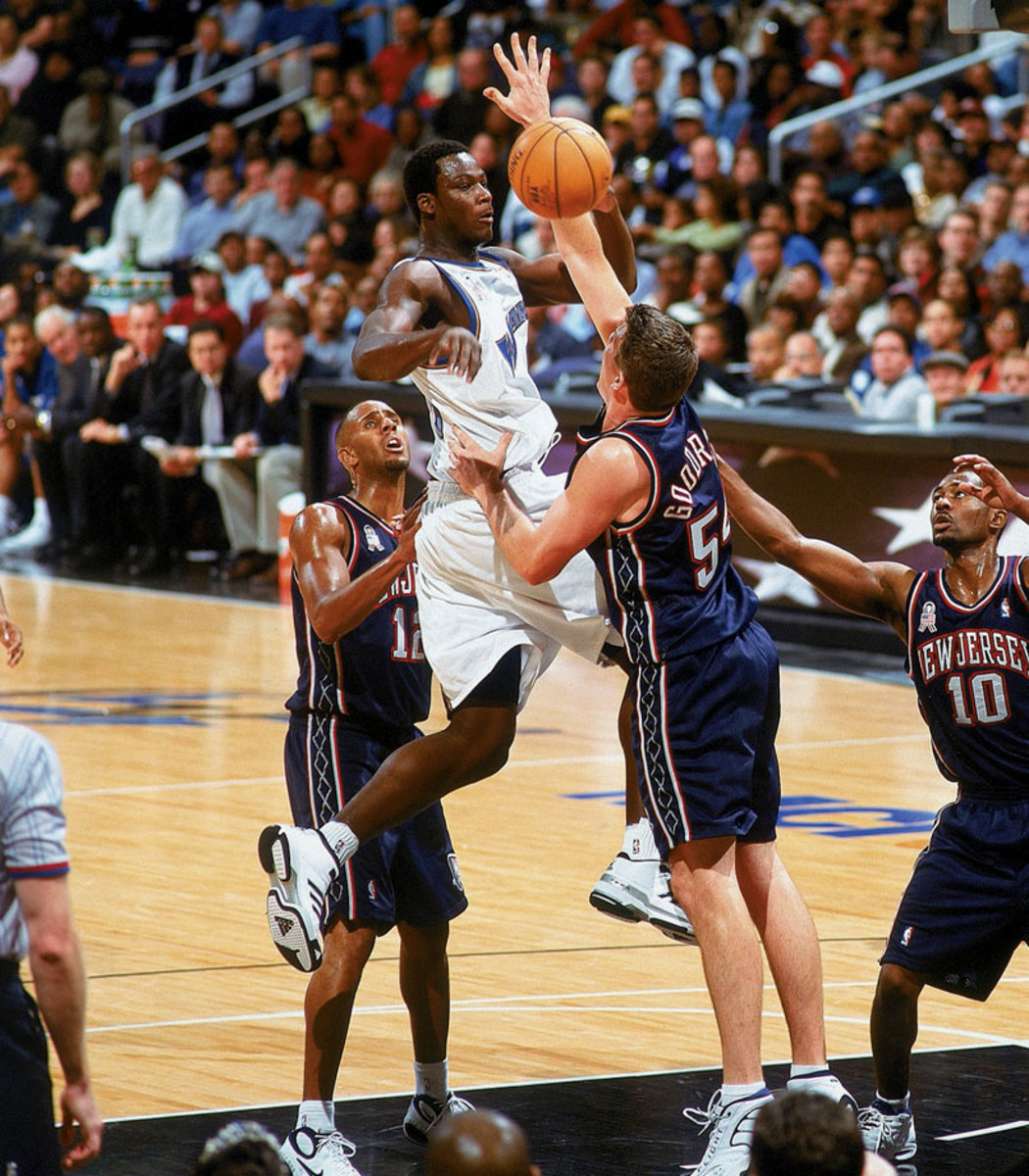
Michael Jordan's handpicked choice played for seven teams in 12 seasons and sports career averages of 6.6 points and 5.5 rebounds. Brown, however, did experience something of a rebirth after reuniting with Jordan in Charlotte in 2010-11, when the 6-11 center averaged 9.4 points and 7.0 rebounds. Those were his best numbers since 2006-07. He was hurt for most of 2011-12 after signing with Golden State and played limited minutes with Philadelphia in 2012-13 before being waived in November 2013.
2000 first round
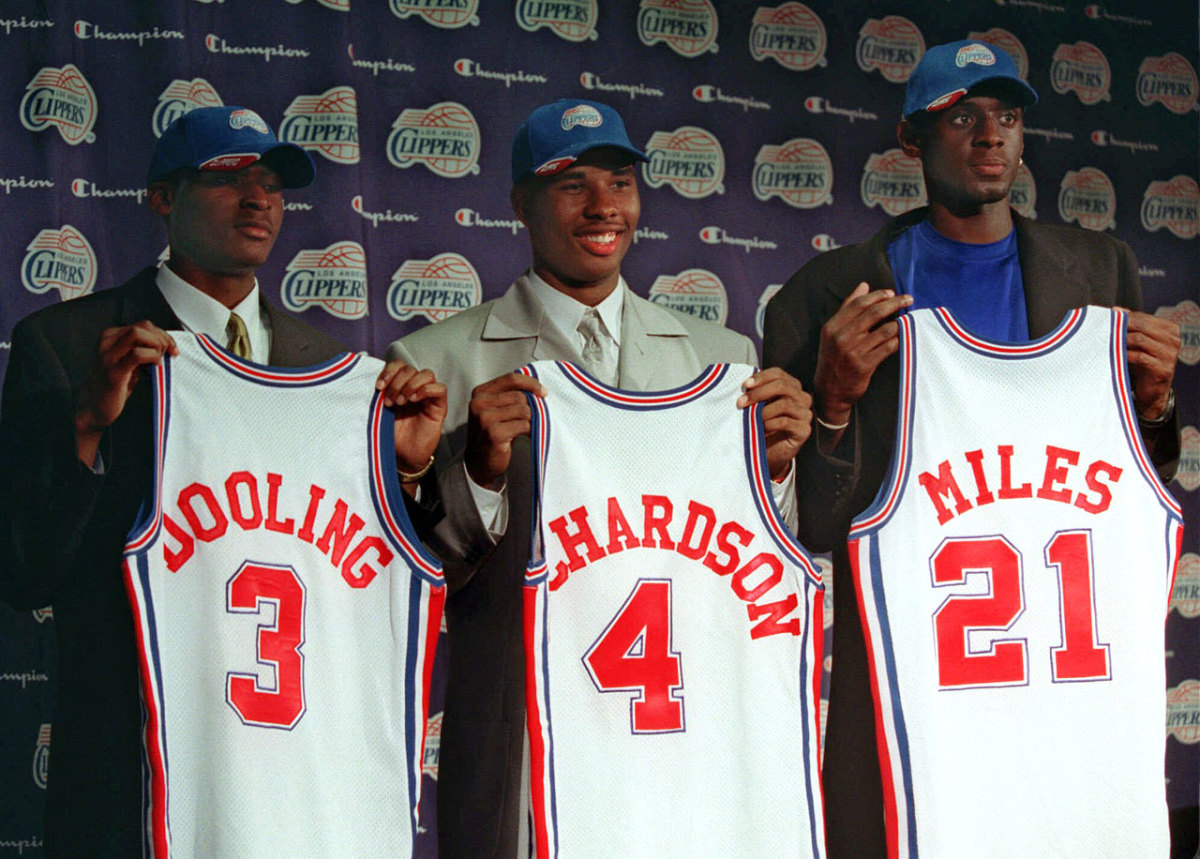
Most of the GMs in '00 got their picks right; this was just a bad group of players. Here was the top half of the first round: Kenyon Martin, Stromile Swift, Darius Miles, Marcus Fizer, Mike Miller, DerMarr Johnson, Chris Mihm, Jamal Crawford, Joel Przybilla, Keyon Dooling, Jerome Moiso, Etan Thomas, Courtney Alexander, Mateen Cleaves and Jason Collier. Particularly unfortunate for the Clippers, who wound up with three of the top 18 picks.
Jonathan Bender, Pacers (via Raptors) | No. 5 pick, 1999
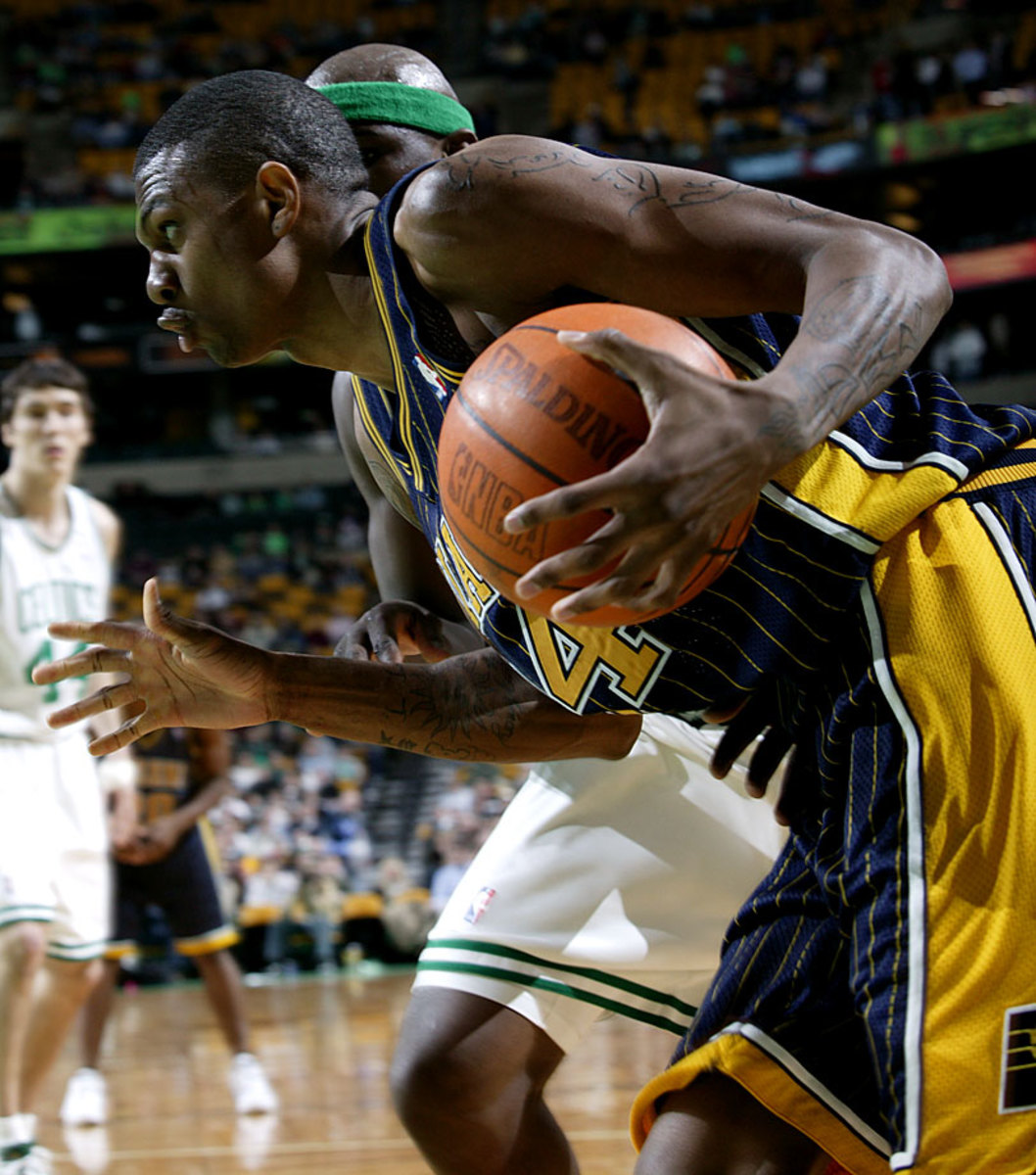
Indiana acquired the draft rights to the preps-to-pros, Kevin-Garnett look-alike for solid big man Antonio Davis. Bender showed tantalizing flashes of his potential but never put it together before cutting short his career because of knee injuries in February 2006. Bender had a 25-game comeback with the Knicks in 2009-2010.
Michael Olowokandi, Clippers | No. 1 pick, 1998
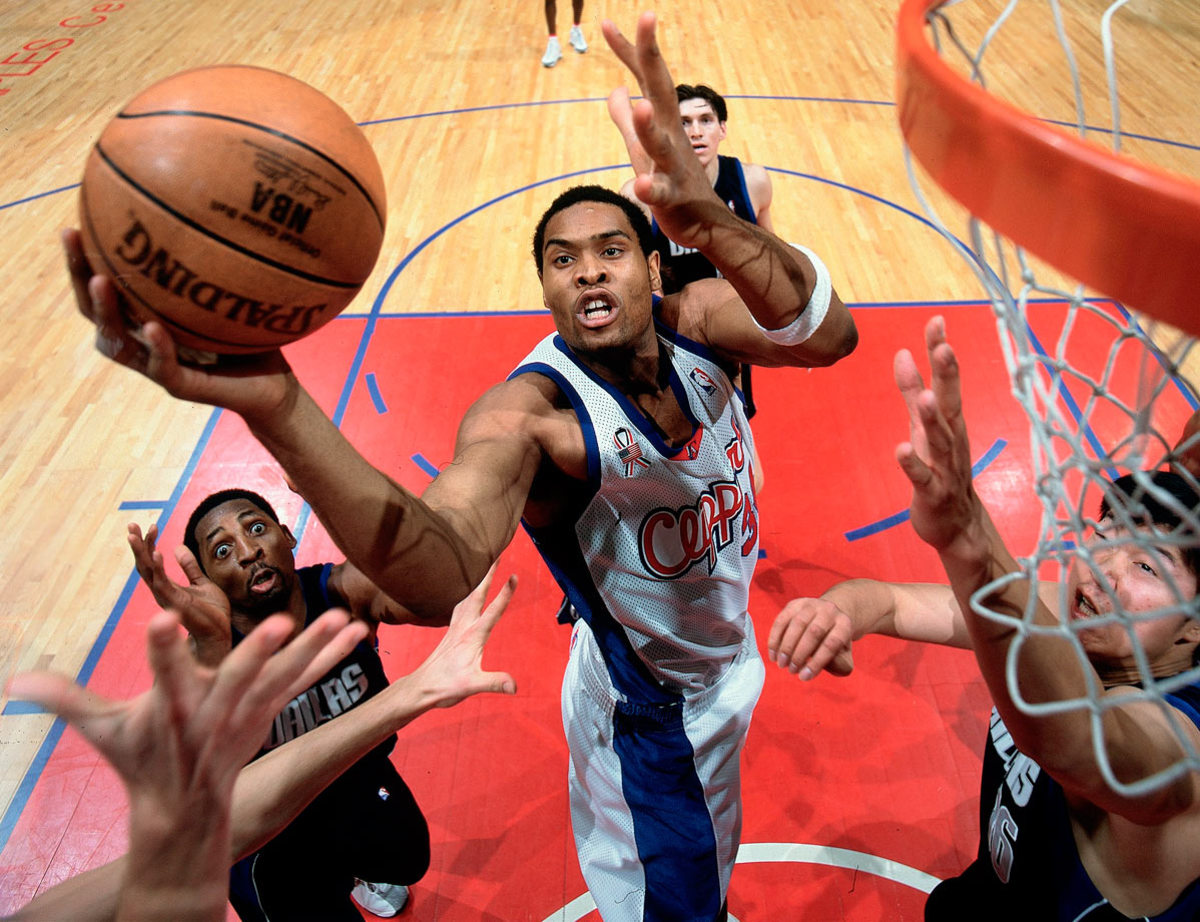
Bust-worthy on so many levels. The Kandi Man was taken before future All-Stars Antawn Jamison, Vince Carter, Dirk Nowitzki and Paul Pierce and a host of more suitable selections. Even the final pick of the first round, Nazr Mohammed, has had a much more distinguished career in the pivot.
Robert Traylor, Bucks (via Mavs) | No. 6 pick, 1998
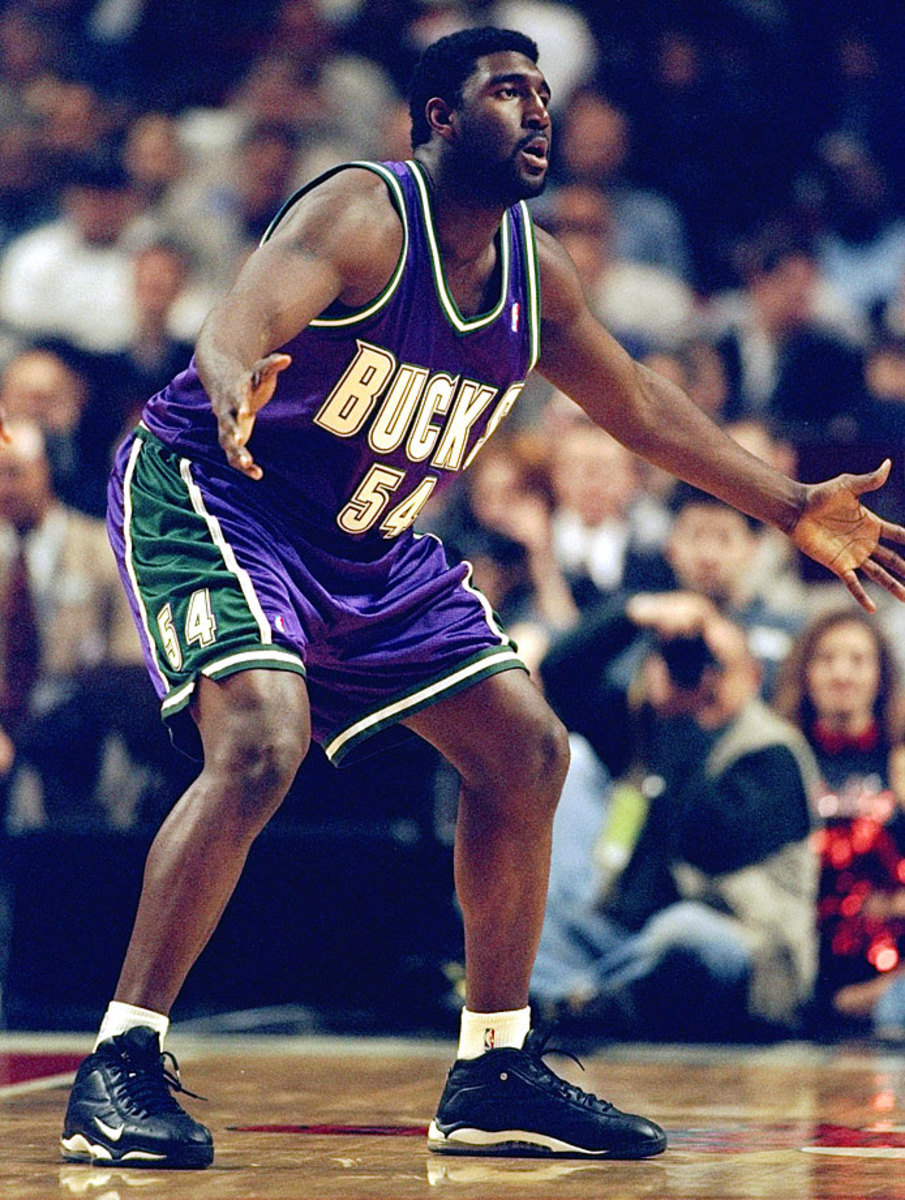
In a prearranged draft-night trade that turned into one of the most lopsided deals in history, the Mavericks sent Traylor to the Bucks for Dirk Nowitzki and Pat Garrity, whom Dallas dealt to Phoenix for Steve Nash. Nowitzki was named MVP in 2007 and led the Mavs to the 2011 title with an epic postseason performance. Meanwhile, the Tractor averaged 4.8 points and 3.7 rebounds in seven seasons.
Joe Smith, Warriors | No. 1 pick, 1995
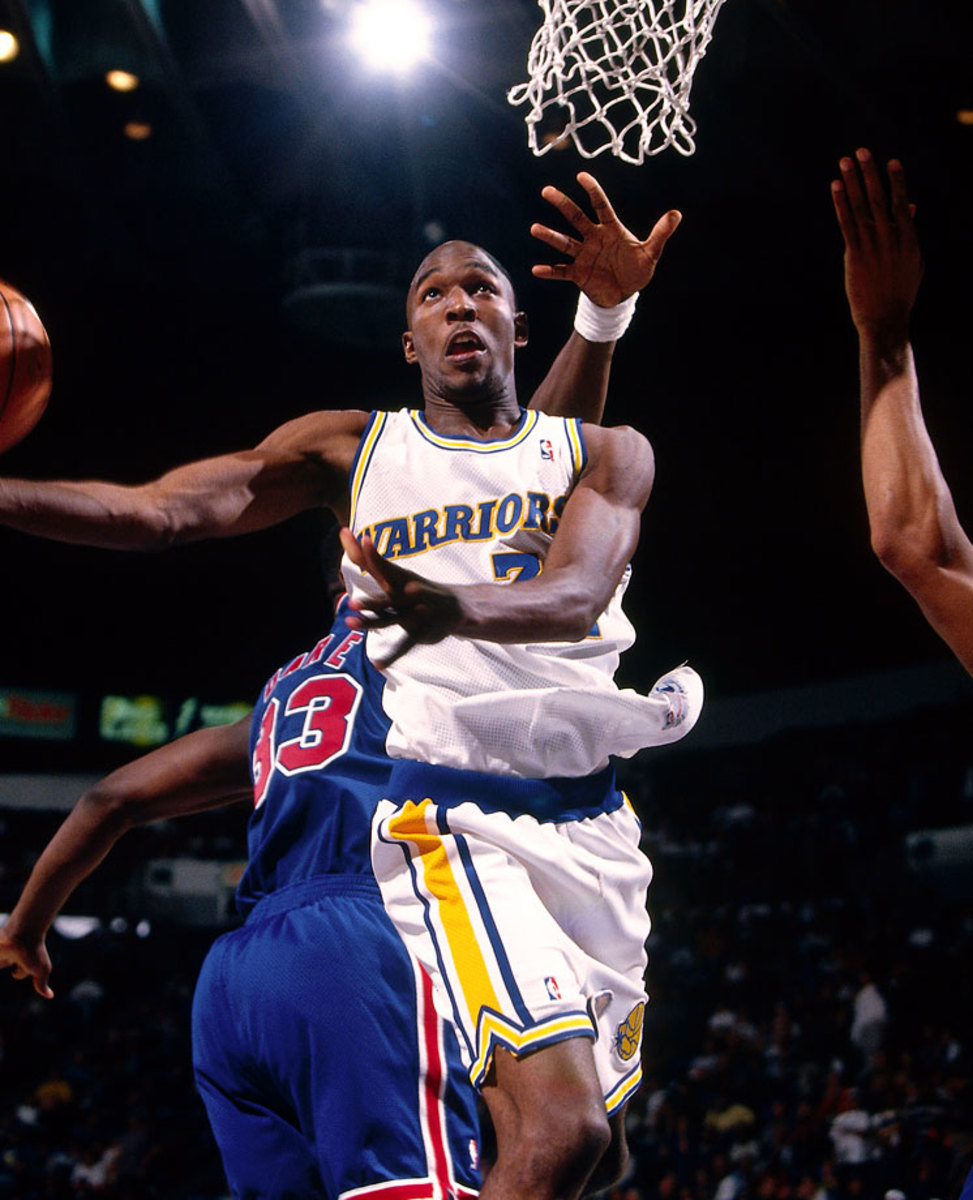
Average in name and game, Smith was serviceable while playing for 12 teams over 16 years, but later selections Antonio McDyess, Jerry Stackhouse, Rasheed Wallace and (especially) Kevin Garnett enjoyed better careers.
Ed O'Bannon, Nets | No. 9 pick, 1995
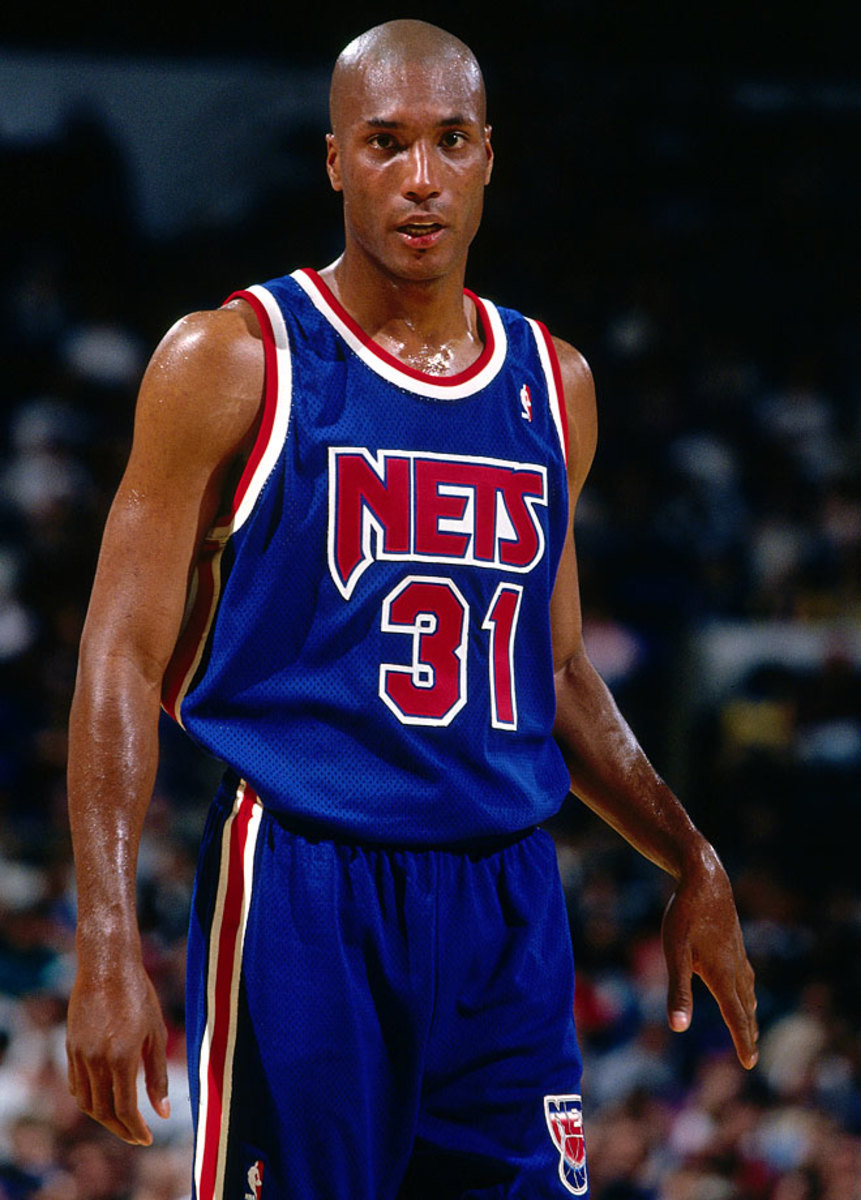
The older and better of the brothers who led UCLA to an NCAA championship in 1995, O'Bannon is the perfect example of a player who had multiple talents but none that rose to an NBA level. He lasted only two seasons, playing with the Nets and Mavericks.
Shawn Bradley, 76ers | No. 2 pick, 1993
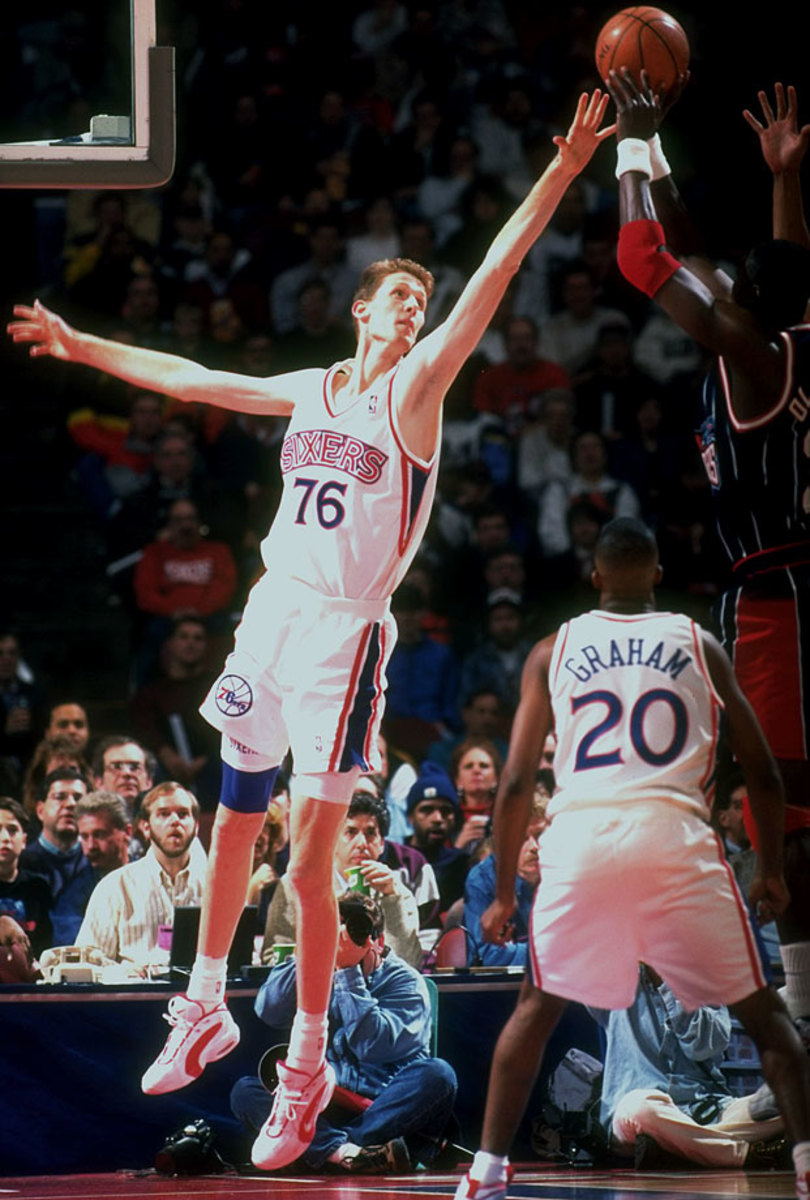
Find him on a poster near you. To his credit, Bradley developed into a so-so big man who ranks 14th on the all-time list in blocks. He's the perfect example of a player whose draft position colors the perception of his career.
Bo Kimble, Clippers | No. 8 pick, 1990
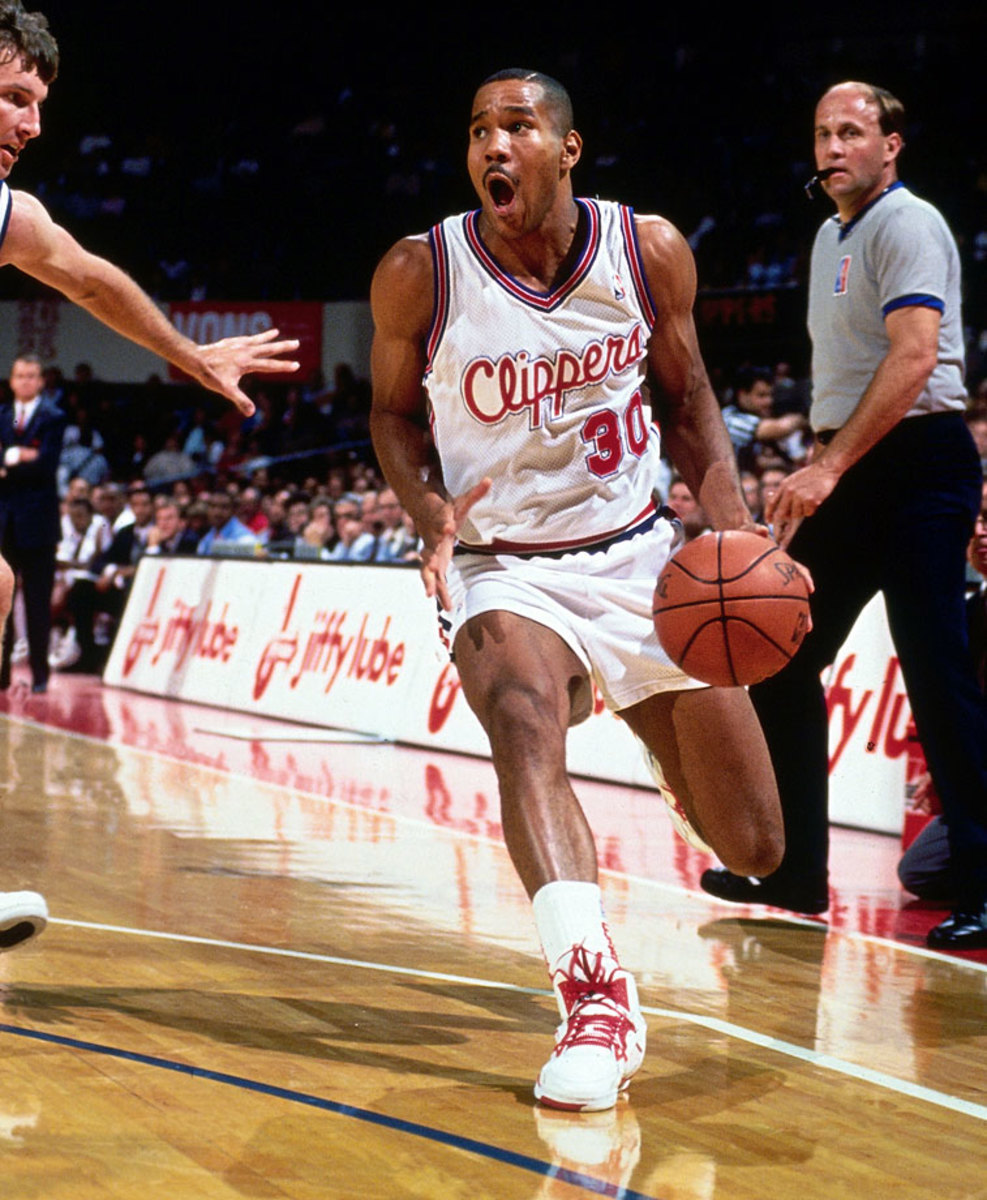
A high-scoring, high-profile college star at Loyola Marymount, Kimble was out of the league after 105 NBA games split between the Clippers and Knicks.
Danny Ferry, Clippers | No. 2 pick, 1989
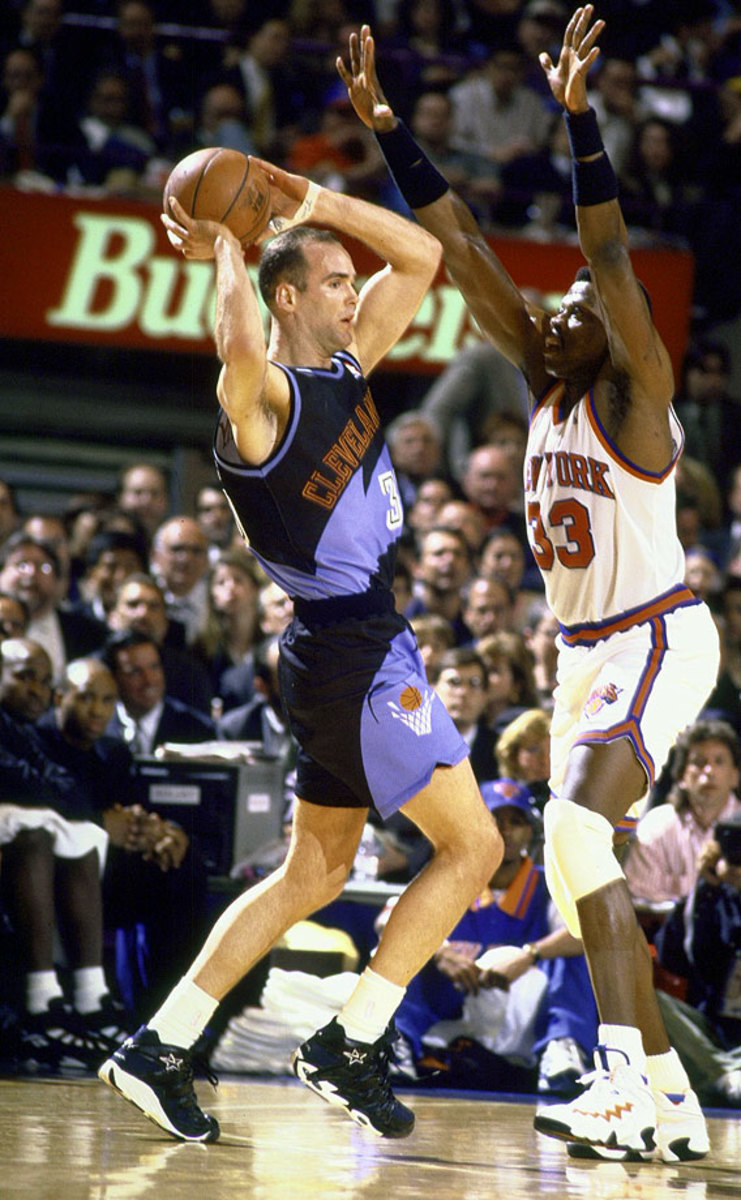
Ferry had no interest in playing for the Clippers so he toiled for a season in Italy before Los Angeles agreed to trade his rights. Well-respected Cavs GM Wayne Embry made one of the worst moves of his career by sending scoring machine Ron Harper to the Clippers for Ferry, who spent 10 nondescript seasons in Cleveland. (Incidentally, the player taken before Ferry, Pervis Ellison, makes many "bust" lists, though he did have a couple of strong seasons before injuries wrecked his career.)
Dennis Hopson, Nets | No. 3 pick, 1987
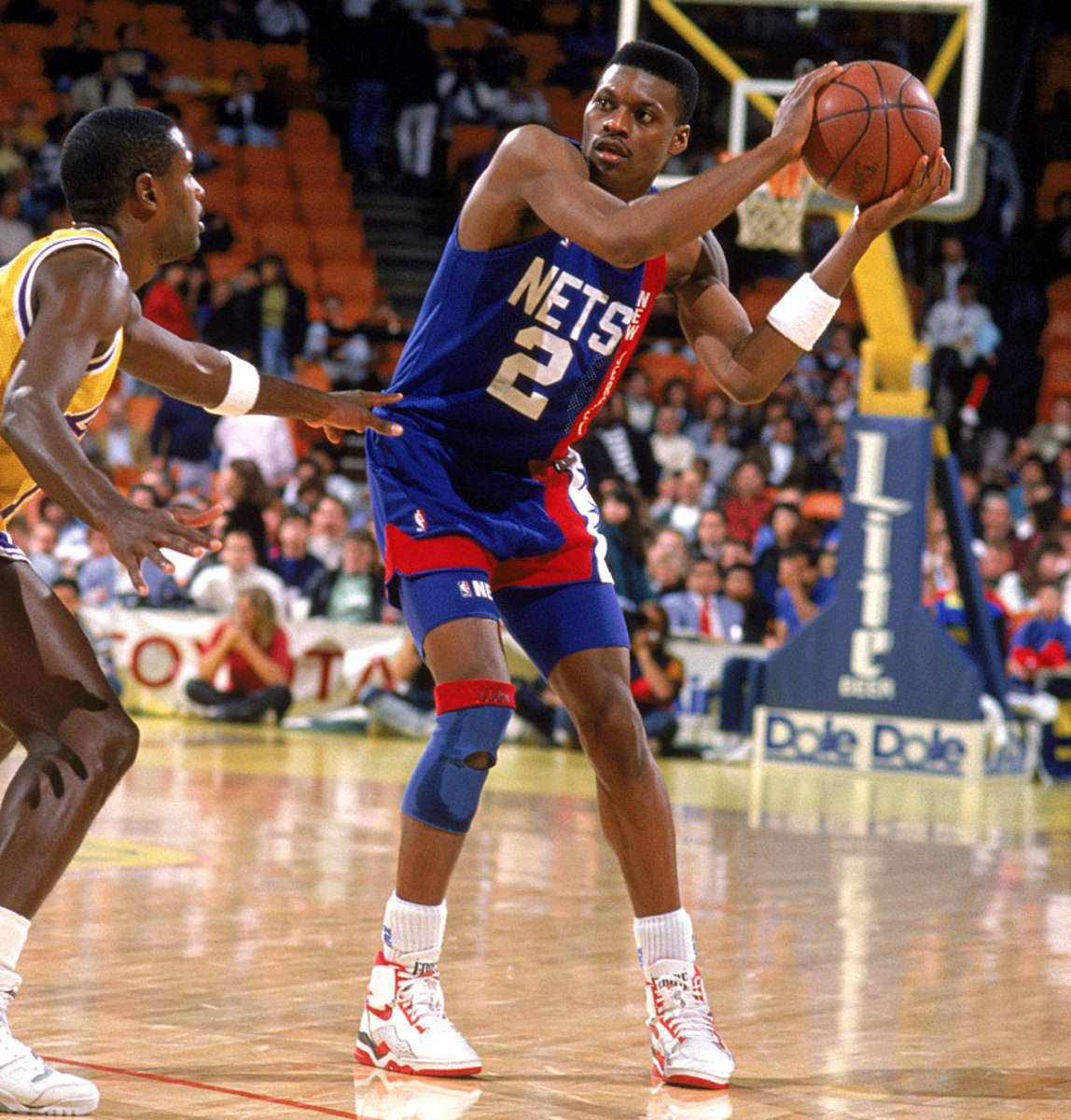
The first in a series of "Next Jordans" flamed out before producing a fraction of what MJ accomplished. Hopson averaged 10.9 points in five seasons.
Chris Washburn, Warriors | No. 3 pick, 1986
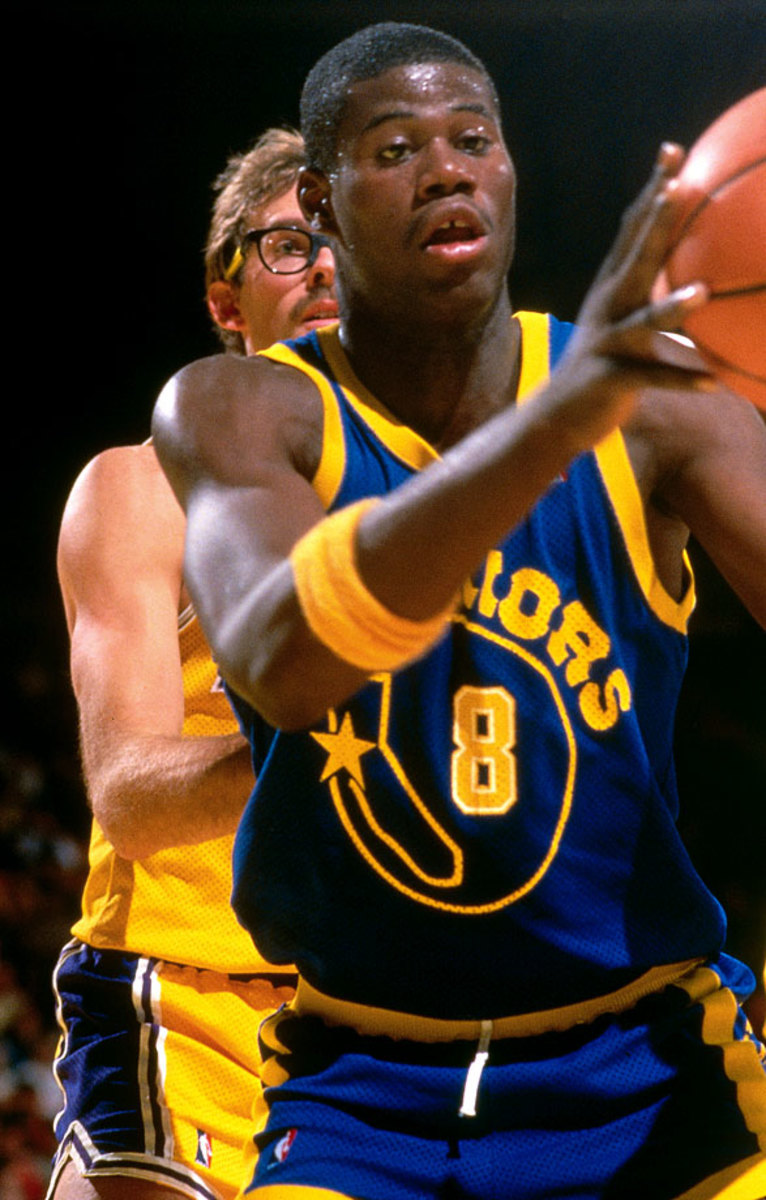
The North Carolina State product totaled 222 points in 72 career games, as good a representative as any for a draft full of busts.
Jon Koncak, Hawks | No. 5 pick and Joe Kleine, Kings | No. 6 pick, 1985
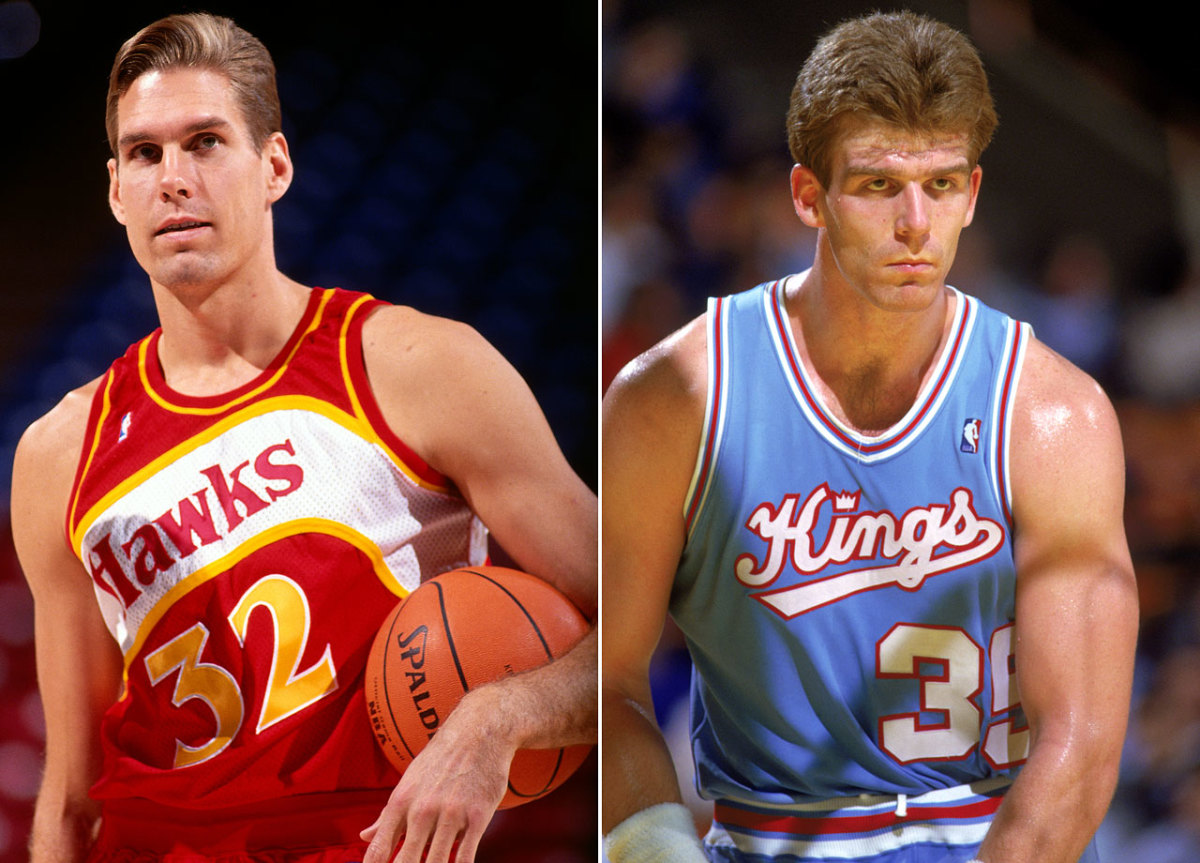
Koncak and Klein spent the bulk of their time in the NBA cashing in on their right to commit six fouls per game.
Sam Bowie, Trail Blazers | No. 2 pick, 1984
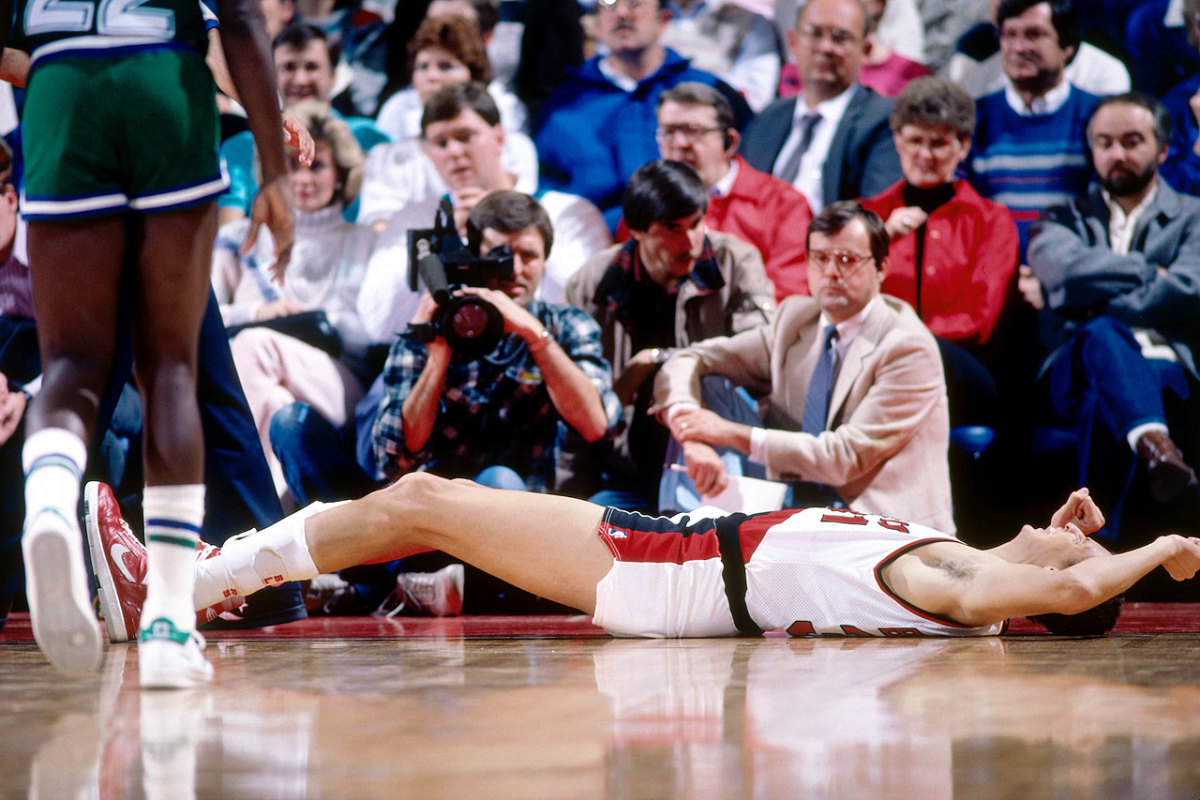
His selection underscores the cardinal rule behind NBA Draftology: You can't draft for need. The Blazers, flush with Jim Paxson and Clyde Drexler on the wings, needed a center and passed on drafting Michael Jordan, Charles Barkley and John Stockton. Bowie struggled with injuries throughout his 10-year run and finished with career averages of 10.9 points and 7.5 rebounds.
Bill Garnett, Mavericks | No. 4 pick, 1982
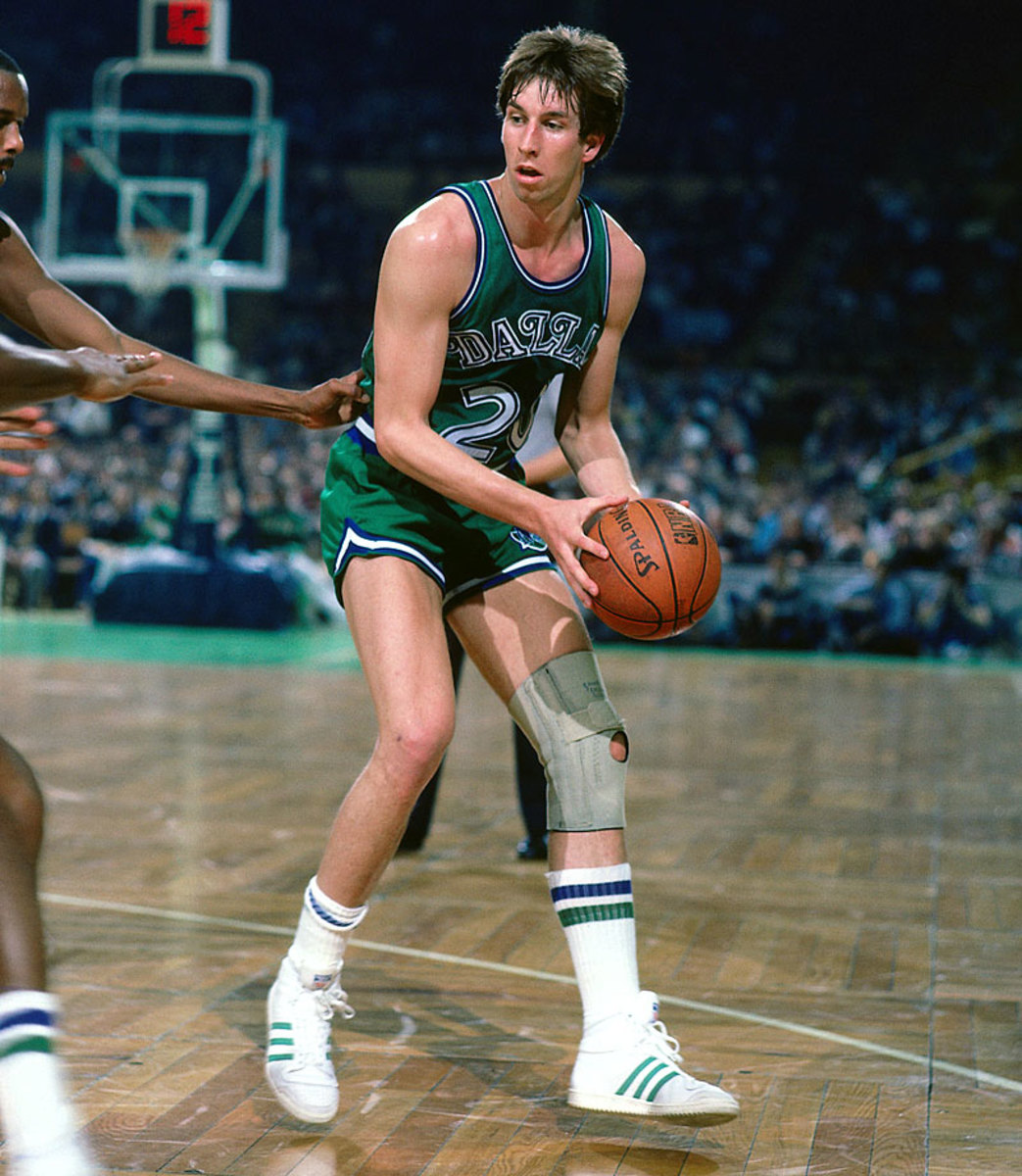
The former Wyoming star split four pedestrian seasons (5.5 points, 4.3 rebounds) between Dallas and Indiana.
Kent Benson, Bucks | No. 1 pick, 1977
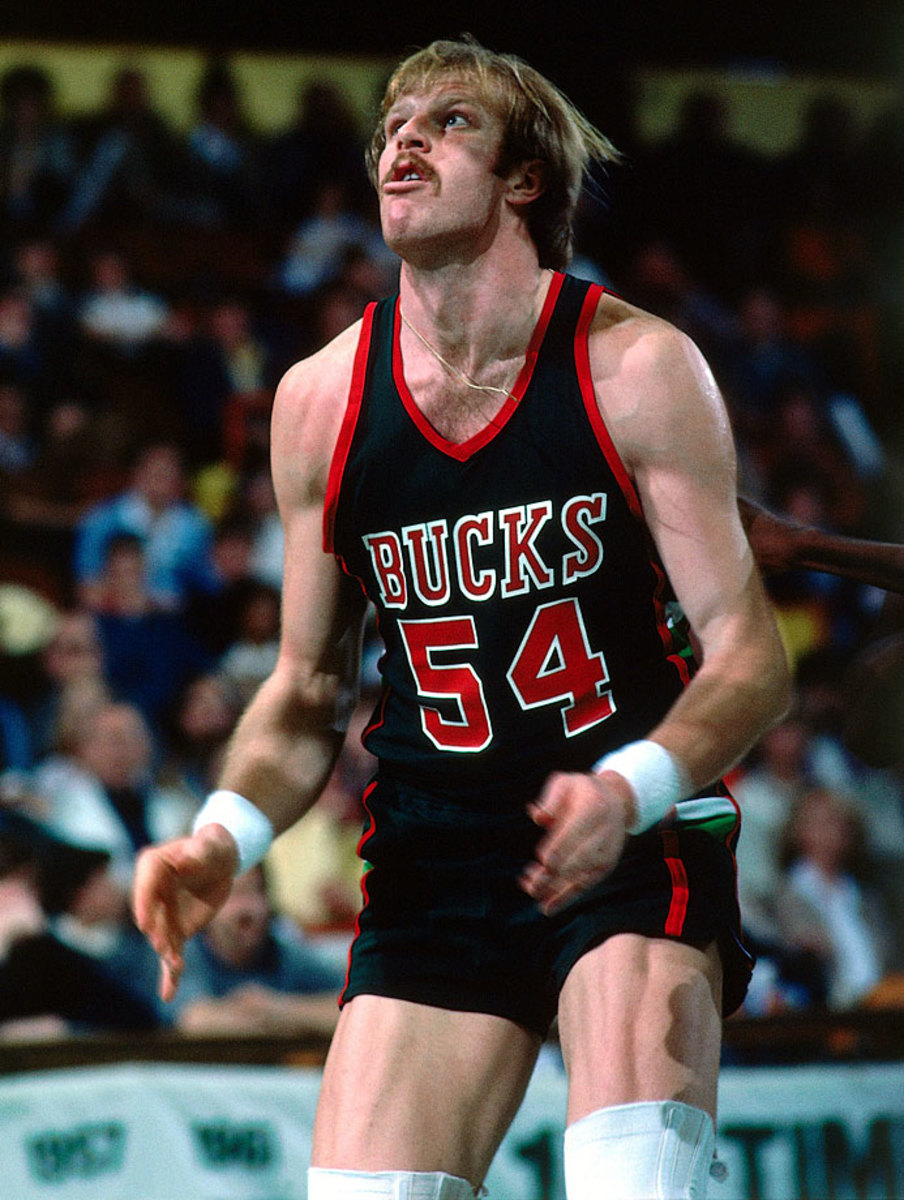
It never got better for Benson than winning the national title at Indiana. He did stick in the NBA for 10 seasons but produced only three double-digit scoring campaigns.
LaRue Martin, Trail Blazers | No. 1 pick, 1972
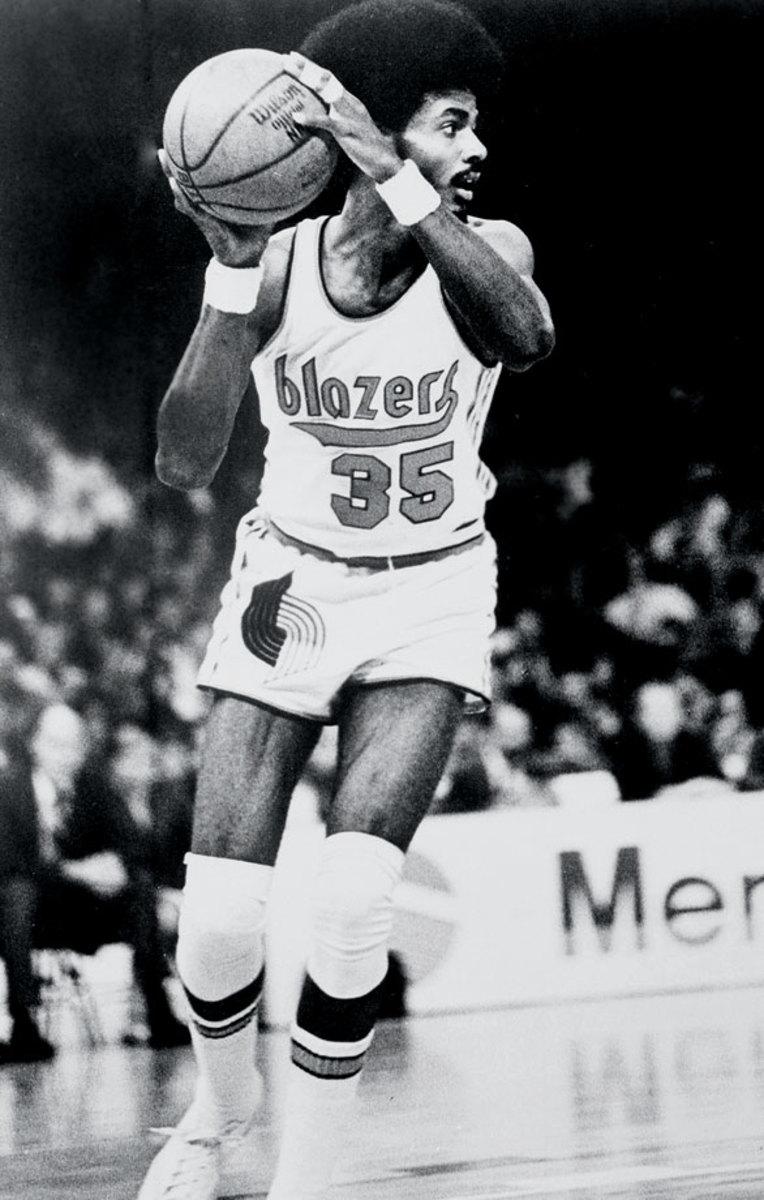
Portland passed on future Hall of Famer Bob McAdoo to take fellow big man Martin, who never averaged more than seven points in his four NBA seasons. The Loyola product retired in 1976, a year before the Blazers won their first and only championship.
Ken Durrett, Cincinnati Royals | No. 4 pick, 1971
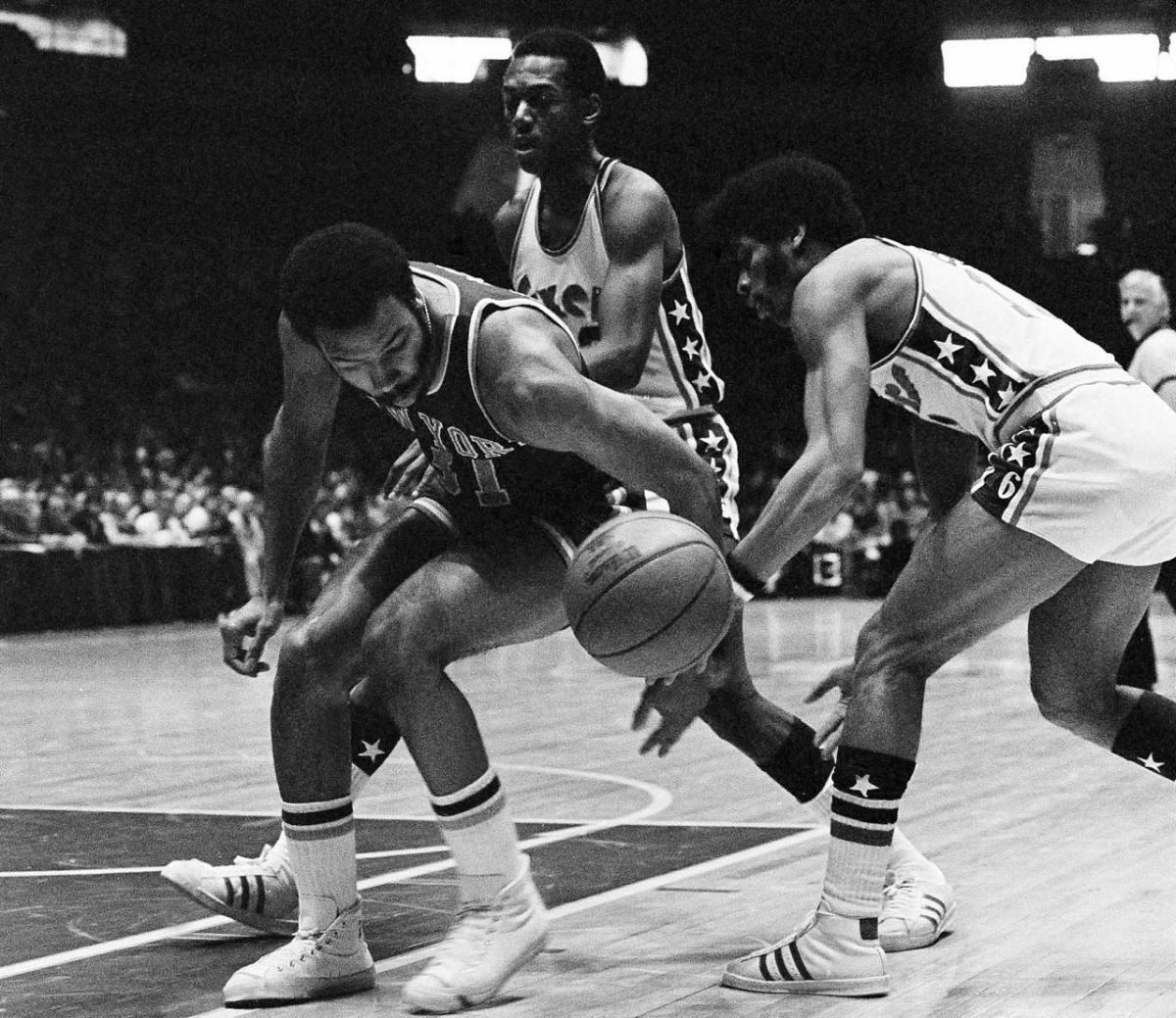
Durrett (pictured in the background, with the 76ers)) had more fouls (197) than field goals (192) in his four-year career, during which he averaged 10 minutes a game and never started.
1. Andrea Bargnani
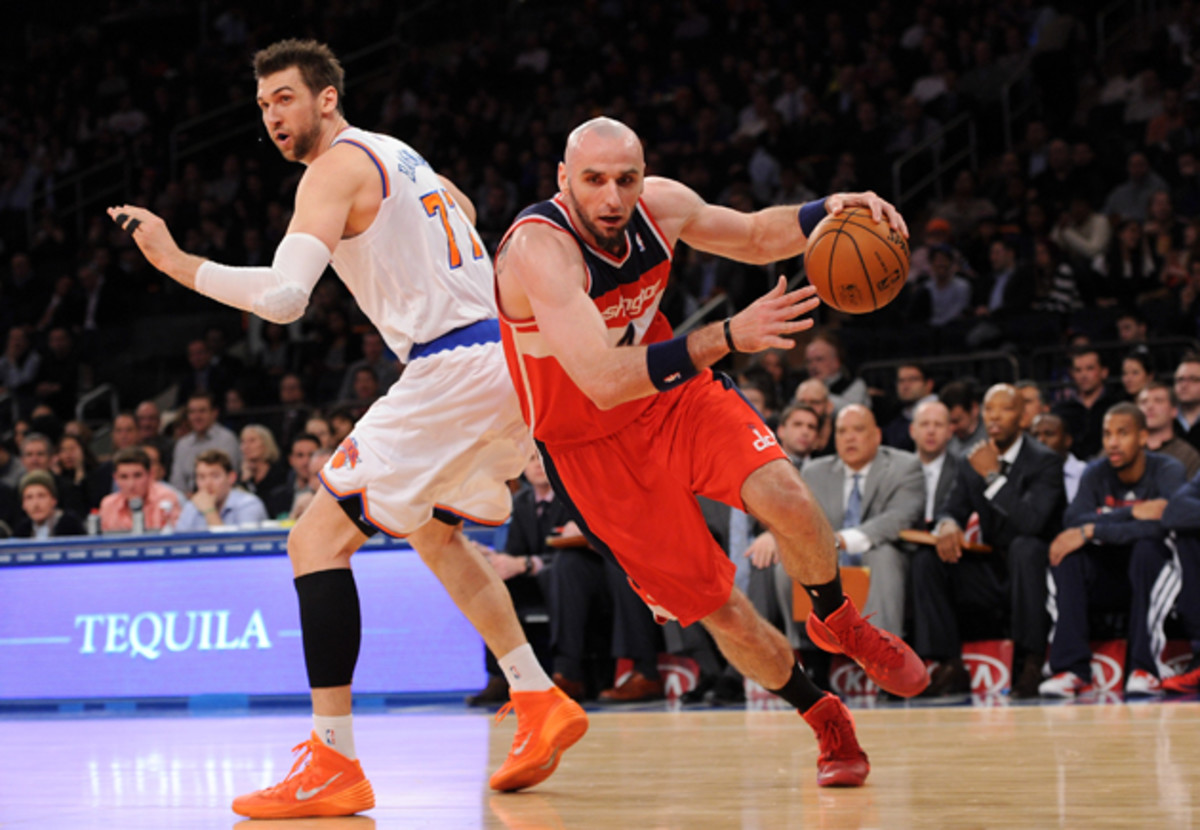
Knicks give:
This may be one of the worst trades in league history, in addition to the worst in team history. The Knicks acquired Bargnani, a former No. 1 pick coming off a disappointing season, from the Raptors in exchange for three draft picks. Three! One of which was a first-rounder.
Bargnani took up a ton of cap room (north of $11 million), played miserable defense and missed a ton of time due to injury with the Knicks. He was detrimental to the team’s development.
